- Free general admission

First royal visit
1867: Australia’s first royal visit – by Prince Alfred, son of Queen Victoria
Prince Alfred in South Australia: His Royal Highness Receiving the Address of the Adelaide City Corporation . National Library of Australia obj-140401734
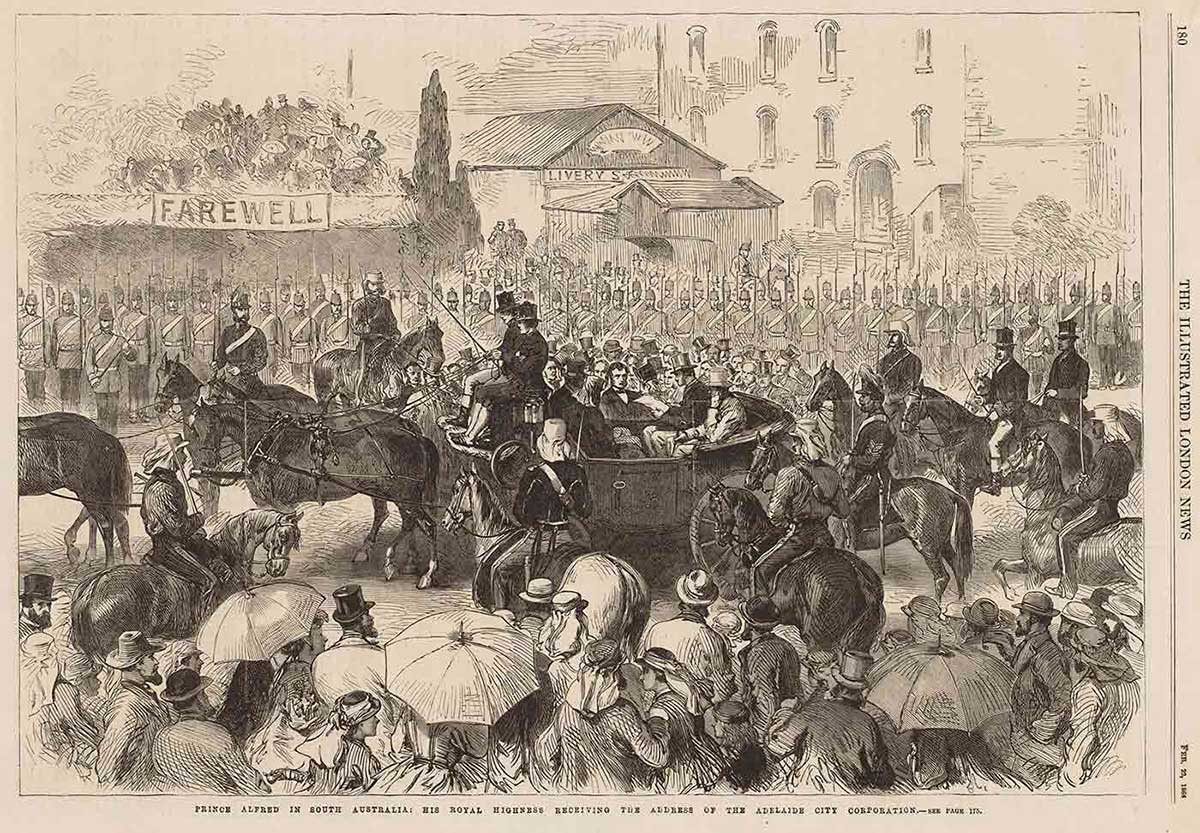
On 31 October 1867 Prince Alfred, second eldest son of Queen Victoria, landed in Adelaide. The Prince was the first member of the British royal family to visit Australia and attracted huge crowds wherever he went.
The tour was marred by rioting, farce, tragedy and Australia's first political assassination attempt. Irishman Henry James O’Farrell shot and wounded the Prince at a Sydney picnic in 1868.
Melbourne Punch , 1867:
80,000 loafers all jammed together. At a Melbourne Banquet, in very hot weather. 80,000 hungry souls, gnashing their teeth. Eager to drink the wine, and gorge the roast beef. 80,000 savages, dirty and greasy. Dr Louis Smith, clean but uneasy. 80,000 drunken louts roaring for wine. A thin line of troopers drawn up in line. Many pretty little girls and spectators huddled. 80,000 Melburnians stupid and fuddled. Wasn’t this a picture to make Melbourne wince? Wasn’t this a dainty dish to set before the Prince.
Naval career
Born in 1844 Prince Alfred was the fourth child and second son of Queen Victoria and Prince Albert.
He joined the Royal Navy at age 14 as a midshipman and by 1866 had attained the rank of captain and had command of HMS Galatea, a steam-powered sail-equipped frigate. In the same year, Alfred was made Duke of Edinburgh.
In January 1867 the Galatea set sail from Plymouth on a round the world voyage visiting the Mediterranean before making a state visit to the emperor of Brazil. Two months were spent in the Cape Colony in South Africa before crossing the Indian Ocean to Australia.
Warm welcome in South Australia
The Prince docked in Glenelg on the outskirts of Adelaide on the afternoon of 31 October 1867. Massive crowds greeted him and lined the roads on the way into the city.
As darkness fell, 40,000 gas lights illuminated the colony’s public offices and immense portraits of the Prince adorned many of the buildings. Alfred spent three weeks in South Australia and masses of people assembled to greet him.
He left the state with a very positive impression saying in a letter to the press that, ‘I have noticed in Adelaide an absence of the poor and rowdy class, so numerous elsewhere’. Considering the SA Parliament had just legislated to keep the colony convict-free, his comment would have had an appreciative audience.
H.R.H. Prince Alfred, K.G., Duke of Edinburgh, HS Sadd, 1868. National Library of Australia obj-135977024
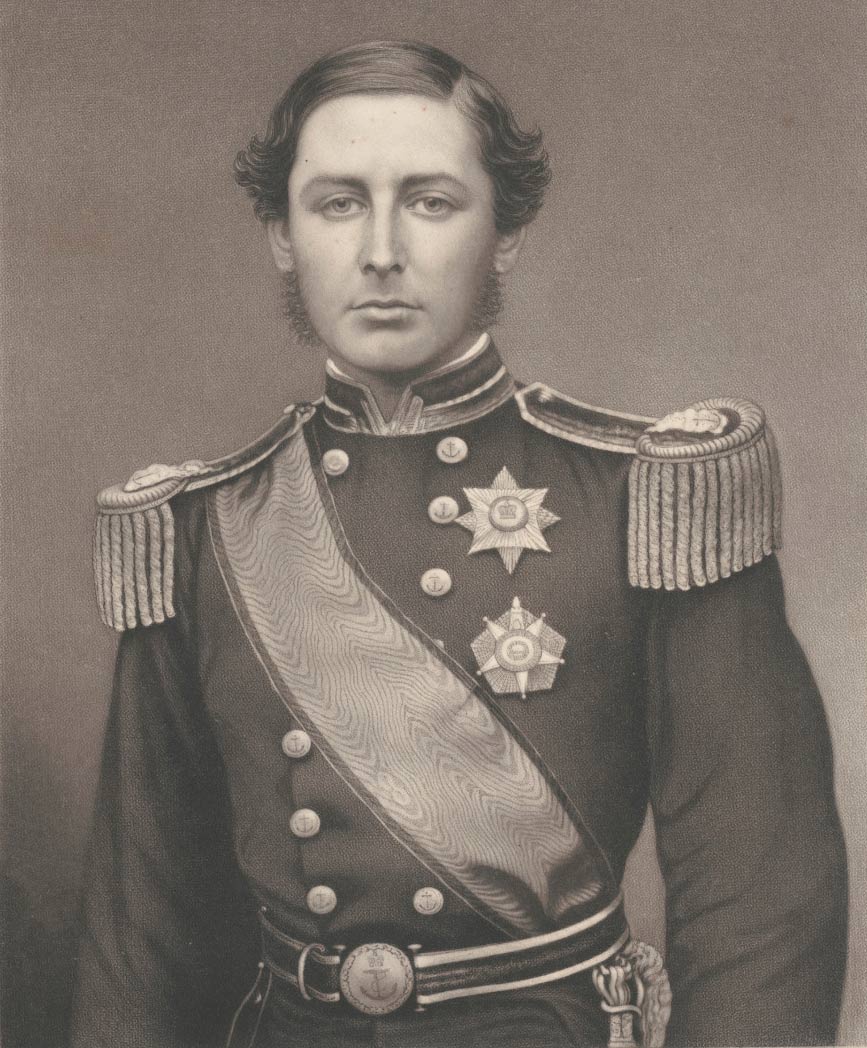
Religious tension and in Victoria
On 24 November 1867 Prince Alfred arrived in Melbourne and again huge crowds welcomed him. But religious tensions marred his time in the colony.
The Protestant community hall was decorated with an image showing William of Orange, the 17th-century English King, defeating Catholic armies at the Battle of the Boyne in Ireland.
Given the tension between Catholics and Protestants in Australia this was a provocative gesture. Crowds of Irish Catholics gathered outside the hall, singing republican Irish songs and throwing stones.
As the group was beginning to disperse the windows of the hall opened and shots were fired into the mob. A Catholic boy was killed and a riot ensued.
There was more mayhem on 27 November at the free public banquet the Prince was to attend.
The organising committee had planned for a crowd of up to 10,000 people, a substantial proportion of Melbourne’s 200,000 population, but 40,000 people arrived expecting free food and wine.
The crowd became restless, and when the Prince cancelled his appearance due to concerns he might be trampled, the angry crowd charged the barriers and another riot took place as thousands fought over the food on the tables and the wine that was to be dispensed from fountains.
Despite these unfortunate events the public was not dissuaded from trying to see the Prince and enormous gatherings continued to follow him. In Geelong, where another free banquet had been organised, larger than planned for crowds again gathered and the organising committee fled.
In Bendigo, a huge firework display was planned. The focus of the spectacle was a model of the ship Galatea. Tragically, three boys climbed into the model and set off the fireworks. They were trapped inside and burned to death.
Two days later a ball was planned at the newly built and named Alfred Hall. Unfortunately, it was a timber building lit with gas lamps and some of the calico sheeting inside caught fire and the hall burned to the ground.
Visit of H.R.H. Prince Alfred to New South Wales – Harbour Reception – The 'Galatea' approaching her anchorage off Fort Macquarie, Port Jackson, F Garling. State Library of NSW 423840
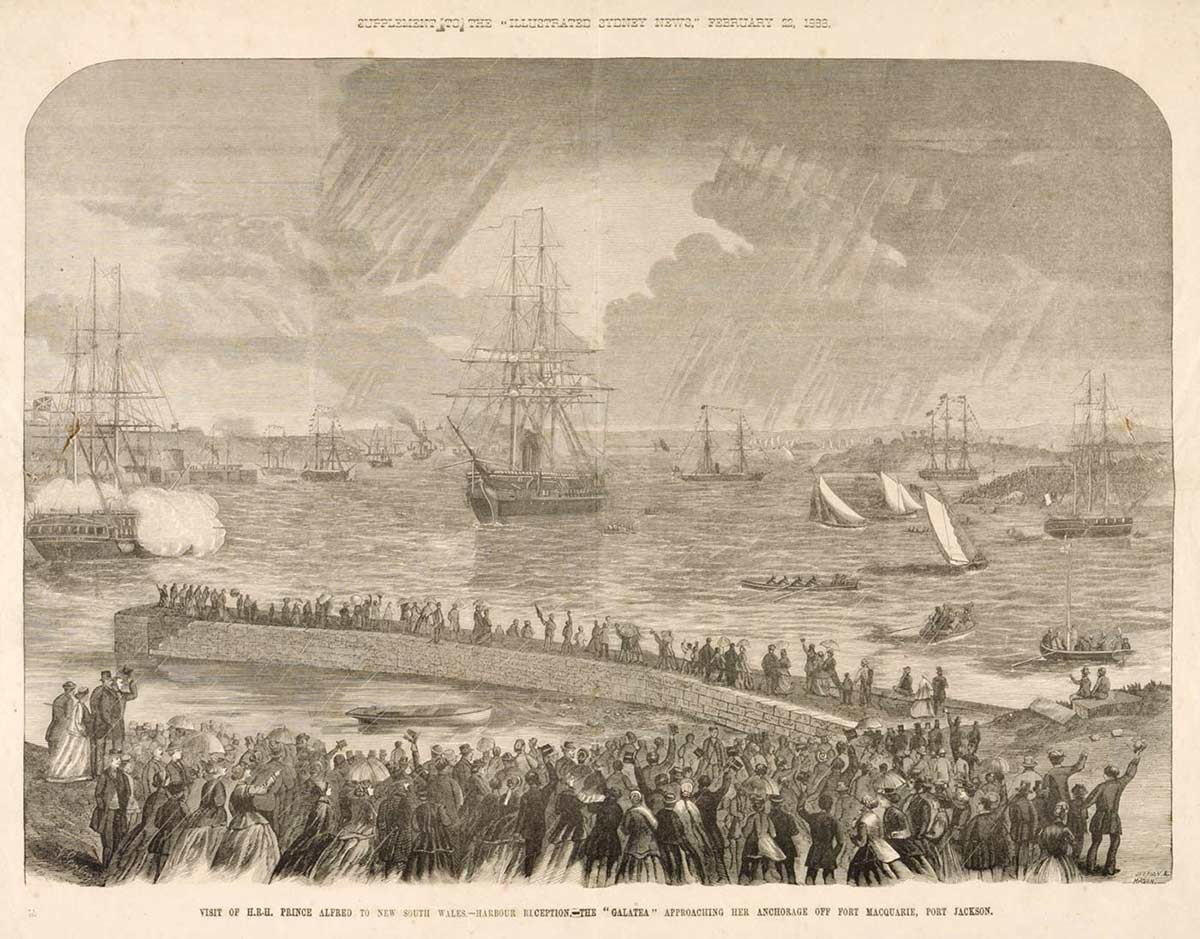
Australia's first political assassination attempt
On 21 January 1868, having visited Tasmania, Prince Alfred arrived in Sydney where he spent a month before travelling to Queensland for a week.
When the Prince arrived back in Sydney in early March his staff requested a less demanding social schedule. The royal tour organising committees agreed, but one event the Prince had agreed to attend was a picnic to raise funds to build a sailors’ home.
The picnic was scheduled for 12 March at Clontarf on Sydney’s north shore. Yet again, larger than expected crowds arrived early at the scene. The Prince sailed up from Sydney Harbour in his steam launch and landed in time for lunch.
After the meal he was escorted by one of the patrons of the event, Sir William Manning, on a walk. A man approached them from the crowd, pulled a double-barreled pistol from his jacket and shot the Prince in the back at close range.
Alfred fell to the ground calling, ‘Good God, I am shot … My back is broken’. The assailant was immediately tackled by a Mr Thorne, who wrestled the weapon from him as he tried to fire a second round.
Attempted assassination of H.R.H. the Duke of Edinburgh at Clontarf, N.S.W. , Samuel Calvert, 1868. National Library of Australia obj-136065850
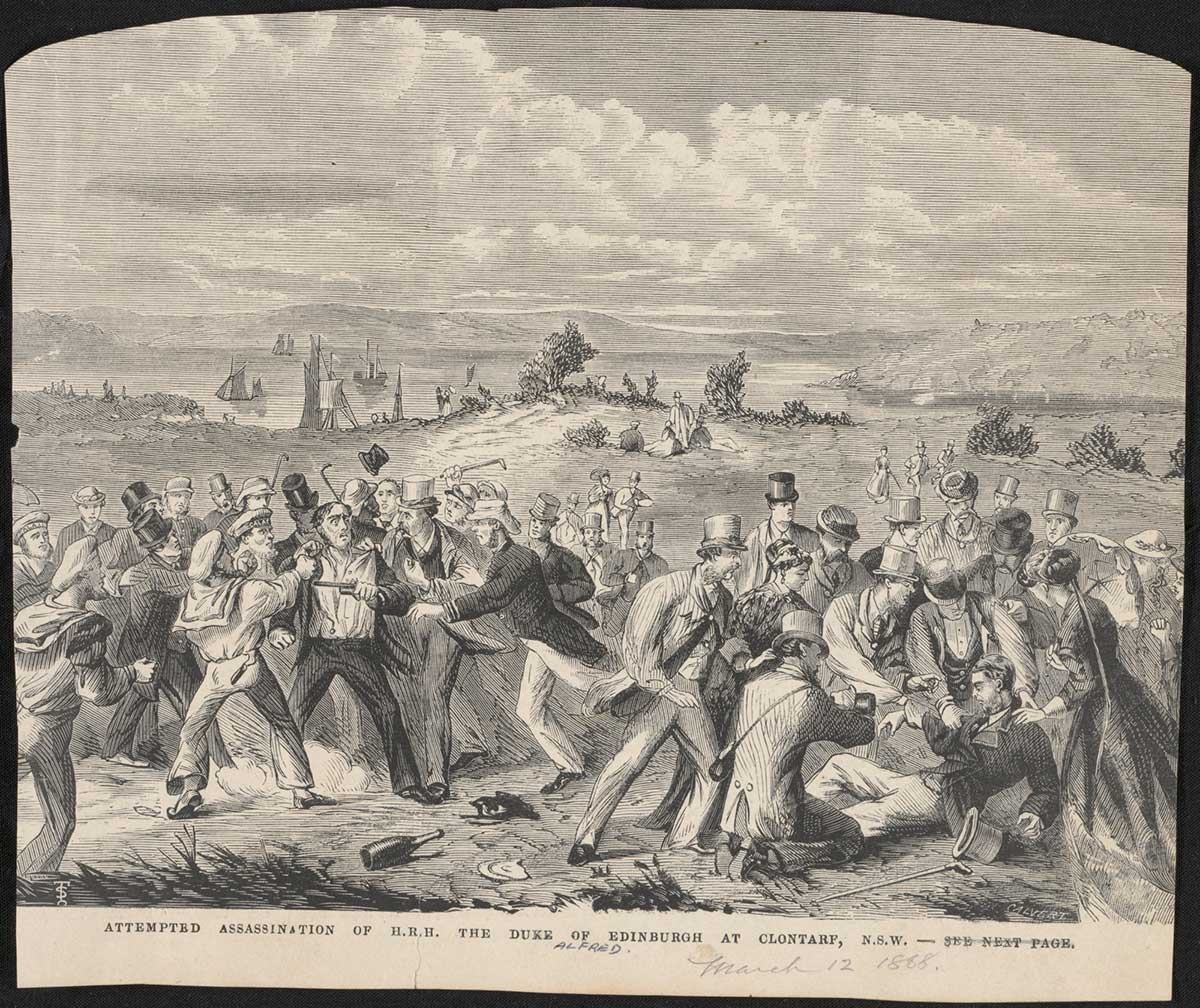
Assassin hanged
The shot had been heard around the picnic ground and the crowd panicked. The Prince was surrounded by a cordon of men, and after a medical examination confirmed the injury was not life threatening he was escorted back to his launch.
The would-be assassin was Henry James O’Farrell, a Catholic Irishman. Australia’s ongoing fear of Irish nationalism, which had become focused on the Catholic community and the separatist Fenian movement, meant that the predominantly Protestant crowd almost lynched O’Farrell on the spot.
Over the next few months there was an outpouring of anti-Catholic sentiment. ‘Indignation meetings’ were held around the country and the newspapers were full of articles attacking the Irish. This sectarian animosity which until then had been somewhat underground now became very public.
The Prince made a full recovery and O’Farrell was convicted of attempted murder, even though he exhibited signs of mental instability. The Prince asked that clemency be shown to his assailant but the request was ignored.
Alfred sailed for England on 4 April and O’Farrell was hanged in Darlinghurst Gaol on 21 April 1868.
Legacy of the royal visit
Concern for the Prince after the shooting, and the relief felt when it was known he would survive, saw the public contributing large sums to funds established to build hospitals in his name.
The Alfred Hospital Melbourne opened in 1871 and the Royal Prince Alfred Hospital, Sydney opened in 1882. Schools, streets and parks were also named after the Prince.
Prince Alfred visited the Australian colonies again, although informally, in 1869 and 1870–71. He died in Germany in 1900.
Catholic–Protestant animosity continued in Australia for another century.
Digital Classroom
Explore free online learning resources on Australia's Defining Moments Digital Classroom.
In our collection
Explore Defining Moments
You may also like
Assassination attempt, Dictionary of Sydney
Prince Alfred, Duke of Edinburgh, Australian Dictionary of Biography
Brian McKinlay, The First Royal Tour 1867–1868 , Rigby Ltd, Adelaide, 1970.
The National Museum of Australia acknowledges First Australians and recognises their continuous connection to Country, community and culture.
This website contains names, images and voices of deceased Aboriginal and Torres Strait Islander people.

Six decades of royal visits: Queen Elizabeth II in Australia – in pictures
- Share on Facebook
- Share on Twitter
- Share via Email
The Queen first visited Australia in 1954 – when she became the first reigning monarch to set foot on Australian soil – and the last in 2011. The visits included motorcades, tram rides, two Commonwealth Games and plenty of horse racing
- This article was amended on 14 September 2022 to correct the locations in two captions
Fri 9 Sep 2022 01.33 BST First published on Fri 9 Sep 2022 01.31 BST
Photograph: Alamy
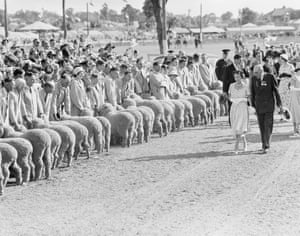
Photograph: Popperfoto/Getty Images
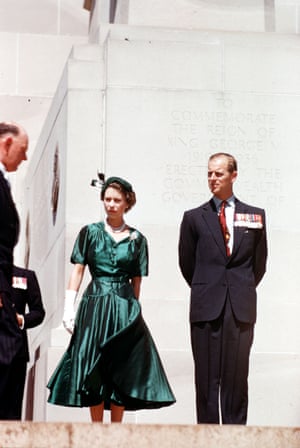
Photograph: Keystone/Getty Images
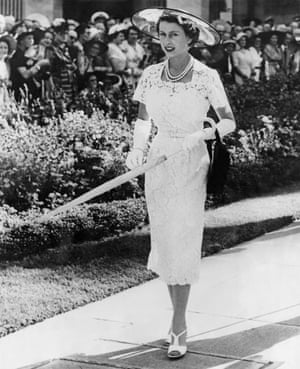
Photograph: Fox Photos/Getty Images
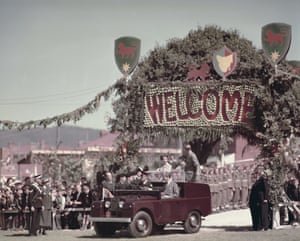
Photograph: Central Press/Getty Images
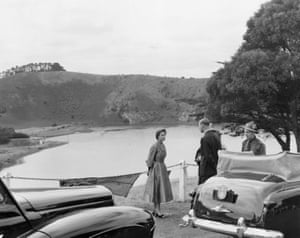
Photograph: Reginald Davis/REX/Shutterstock
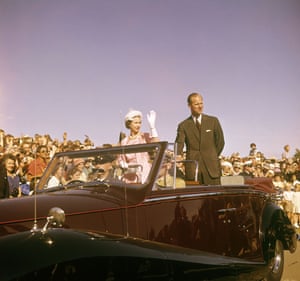
Photograph: Reginald Davis / Rex Features

Photograph: Hulton Archive/Getty Images
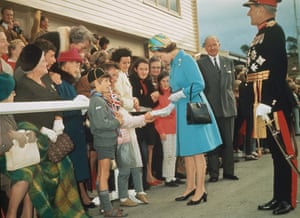
Photograph: Getty Images
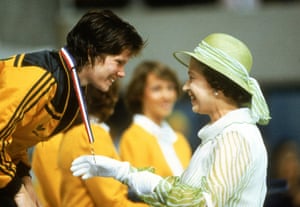
Photograph: Fairfax Media/Fairfax Media via Getty Images
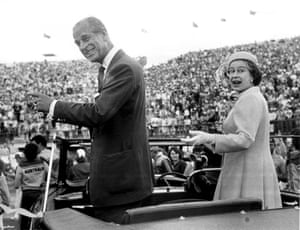
Photograph: Rex/Shutterstock
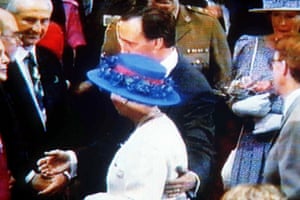
Photograph: Torsten Blackwood/AFP/Getty Images
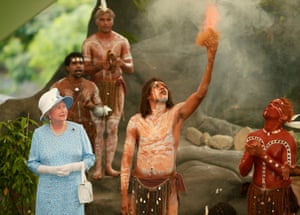
Photograph: AFP/Getty Images
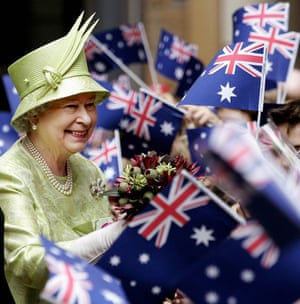
Photograph: Scott Barbour/Getty Images
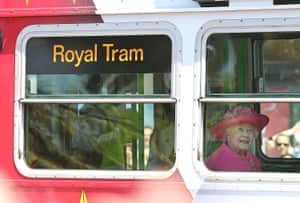
Photograph: Pool/Getty Images
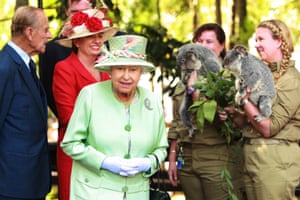
Photograph: Handout/Getty Images
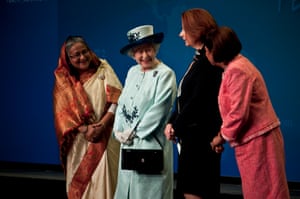
- Australia news
- Queen Elizabeth II
- Commonwealth Games
- Horse racing
More galleries
Most popular.

- Plan my Visit
- What's On
QVB HISTORY TOUR
Experience over a century of history.
The QVB History Tour takes you on a journey to uncover a story of resilience, culture, and progress as you explore one of Sydney's most iconic historical buildings. Built in 1898 as a monument to the long reigning monarch, you will learn about the Queen Victoria Building's creation, near destruction and modern way preservation from our expert guides.
On this 45 min walking tour, you will discover elaborate Romanesque architectural features including glorious stained glass windows, magnificent atriums, and the mighty centre dome, whilst exploring the inside and outside of the building as you visit the ground floor through to level two of the Queen Victoria Building.
Session Dates and Times
* The tour is 45 minutes in duration
Monday: 12:00pm
Tuesday: 12:00pm
Wednesday: 12:00pm
Thursday: 12:00pm & 2:00pm
Friday: 12:00pm
Saturday: 12:00pm & 2:00pm
Sunday: 12:00pm
The tour meeting point is at the Concierge Desk, located on the Ground Floor.
Ticket Pricing and Service Conditions
Tickets are $25 per person and bookings must be made online by a person above the age of 18 years. Price includes GST.
Children 0 to 12 years are free of charge and need to be accompanied by a paying adult.
Please note that each tour will run with a minimum of 2 people and a maximum of 15 people.
Private tours and group tours are available on request.
Book your QVB History Tour
Frequently asked questions, do you accommodate group bookings.
You are welcome to book up to 15 tickets per tour session. Group bookings for more than 15 people are available upon request.
IS THE TOUR ACCESSIBLE BY WHEELCHAIR?
Yes, the QVB History Tour is accessible by wheelchair. Contact the Guest Experience team via email [email protected]
WHERE DOES THE TOUR DEPART FROM?
QVB, 455 George St Sydney NSW 2000. Meet at the Concierge Desk on Ground Floor to commence the tour. The tour will take you to the Ground Floor, Level 1 and Level 2 of the QVB. Please note the QVB History Tour does not take you into hidden parts or hidden access of the building.
WHAT TIME SHOULD I ARRIVE?
Please arrive 10 minutes prior to your tour session time.
WHERE CAN I PARK?
You are welcome to park at the QVB Car Park located at 111 York Street Sydney. Take the Car Park elevator up to Ground Floor and meet at the Concierge Desk near the George St entrance.
Special parking offers are available – to book head to:
https://www.wilsonparking.com.au/book-a-bay
Click here to view the car park map.
WHAT IF I WANT TO CHANGE MY BOOKING?
We understand that some customers may wish to change their session time to a different day/time after booking.
1 . You may request to cancel your booking by contacting us on the details below. If you request to cancel your booking 48 hours or more before your session time a full refund will be provided to the credit card that you used to make your booking.
2 . If you fail to attend your session time or request to cancel your booking less than 48 hours before your session time, no refund will be provided. However, if you believe there are exceptional circumstances, please contact us using the details above. In such circumstances, we may choose (in our absolute discretion) to offer you a refund.
3 . You may request to reschedule your booking by contacting us using the details above. If you request to reschedule your booking 48 hours or more before your session time, you can reschedule to another available date or time, at no cost.
4 . If you request to reschedule your booking less than 48 hours before your session time, your request will be refused, unless there are exceptional circumstances (which will be determined in our absolute discretion).
5 . We reserve the right to re-schedule session times if necessary due to circumstances beyond our reasonable control. If we need to reschedule a session time, we will if practical notify you of the new session time 48 hours or more before your original session time. If you cannot attend the new session time, a full refund will be provided. We are not responsible for any other costs you might incur relating to the rescheduling of session times.
Contact the Guest Experience team via email [email protected] if you need to reschedule or cancel your booking.
WHAT IF I AM LATE AND MISS MY TOUR?
Unfortunately, if you missed your tour there is no guarantee that we can fit you into another tour. There are no refunds for missed sessions.
WHAT IS YOUR CANCELLATION AND REFUNDS POLICY?
. You may request to reschedule your booking by contacting us using the details above. If you request to reschedule your booking 48 hours or more before your session time, you can reschedule to another available date or time, at no cost.
Please contact the Guest Experience team via email [email protected] if you need to reschedule or cancel your booking.
WHAT ARE THE TERMS AND CONDITIONS FOR THE TOUR?
You can view the full Service Conditions here.
If you have any questions about the tour, please contact the Guest Experience team at [email protected] or call 02 9265 6800.
Quick Links
Vicinity centres, opening hours, sign up to the qvb, stay connected.
- 455 George St, Sydney, NSW 2000, Australia
- Call (02) 9265 6800
- Get directions via Google


16 visits over 57 years: reflecting on Queen Elizabeth II’s long relationship with Australia
Associate Professor of English, Flinders University
Disclosure statement
Giselle Bastin does not work for, consult, own shares in or receive funding from any company or organisation that would benefit from this article, and has disclosed no relevant affiliations beyond their academic appointment.
Flinders University provides funding as a member of The Conversation AU.
View all partners
“Elizabeth the Second, by the Grace of God Queen of Australia and Her other Realms and Territories, Head of the Commonwealth” has died. Given her advanced years, this has long been expected, yet it still seems incredible this woman who has been Australia’s queen for the duration of most Australians’ lives is no longer with us.
While the focus of the formalities and ceremony of the passing of Queen Elizabeth II will centre on London and the UK, there is no doubt it will be keenly observed by many Australians.
The queen liked Australia and Australians. She came here 16 times throughout her reign and was, famously, on her way to our shores in 1952 when she learned her father had passed on and she was now queen.
Her visits to Australia – from her first in 1954 through to her last in 2011 – offer a snapshot of the changing relationship Australians have had with their sovereign and with the monarchy.
An enthusiastic nation
The queen’s 1954 tour took place during a time described by historian Ben Pimlott as the age of “ British Shintoism ”. Deference to the Crown was paramount in Britain and the Commonwealth, and many Australians were madly enthusiastic about their queen.

After her arrival at Farm Cove in Sydney on February 3 1954, Elizabeth II became the first British monarch to set foot on Australian soil. The royal tour lasted nearly two months and consisted of a gruelling schedule taking in visits to every state and territory apart from the Northern Territory.
During the tour, the queen greeted over 70,000 ex-service men and women; drove in cavalcades that took in massive crowds; attended numerous civic receptions; and opened the Australian Parliament in Canberra. The tour saw Elizabeth travel 10,000 miles by air and 2,000 miles by road – including 207 trips by car and by appointed royal trains.
It is estimated as much as 75% of the population saw the queen and Prince Philip during this tour.
No Australian prime minister has ever had a reception on this scale or exposure to so many of the country’s citizens.
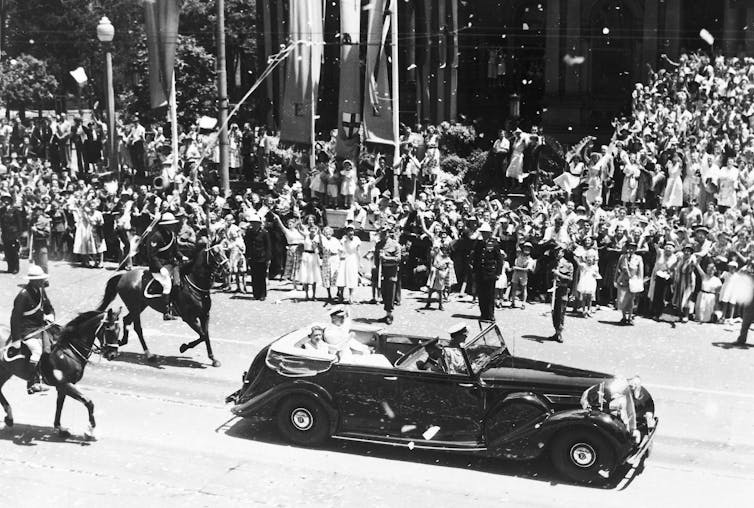
A “new” and prosperous country
During her first two tours in 1954 and 1963, the Australia laid-out for display for the queen was depicted as having gone from being a small colonial settlement to a thriving economy that had ridden to prosperity “ on the sheep’s back ”.
The queen was treated to endless displays of sheep shearing, surf carnivals, wood chopping, whip cracking, and mass displays of dancing and singing by school children. Federal and state dignitaries, mayors and civic leaders from across the political divide jostled to meet and be seen with her; the country’s florists were emptied of flowers for the hundreds of bouquets presented to her by dozens of shy, nervous school children nudged gently forward by awe-struck parents.
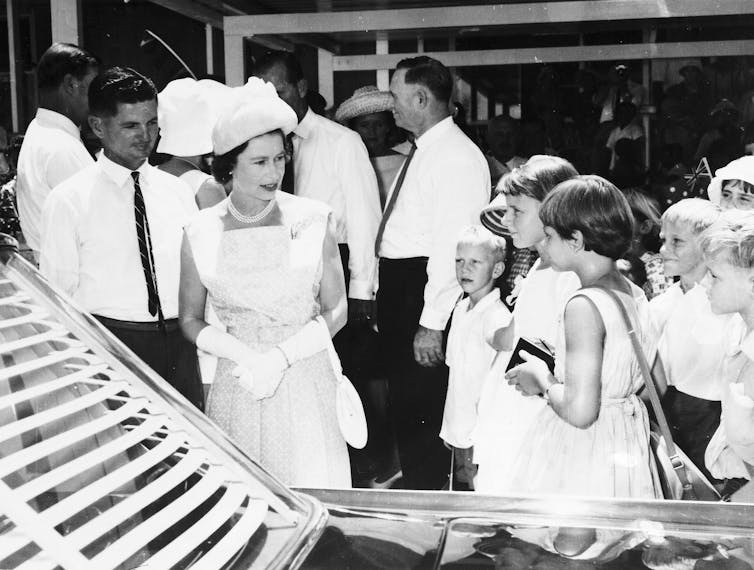
During the early tours, Aboriginal Australians were kept at a discreet distance. Apart from a demonstration of boomerang and spear throwing, the closest the queen came to experiencing anything of Indigenous Australian culture was a ballet performed by the Arts Council Ballet titled Corroboree, with no Aboriginal dancers but dancers with blackened faces.
During the 1970 visit, the queen witnessed the re-enactment of Captain James Cook’s arrival at Botany Bay, with Cook and his crew meeting “the resistance of the Aborigines with a volley of musket fire”.
By 1973, Indigenous Australians were given a more significant role in the royal tours. Aboriginal actor Ben Blakeney, one of Bennelong’s descendants, gave the official welcome during the opening of the Sydney Opera House, and the then unknown actor David Gulpilil was among those performing a ceremonial dance.
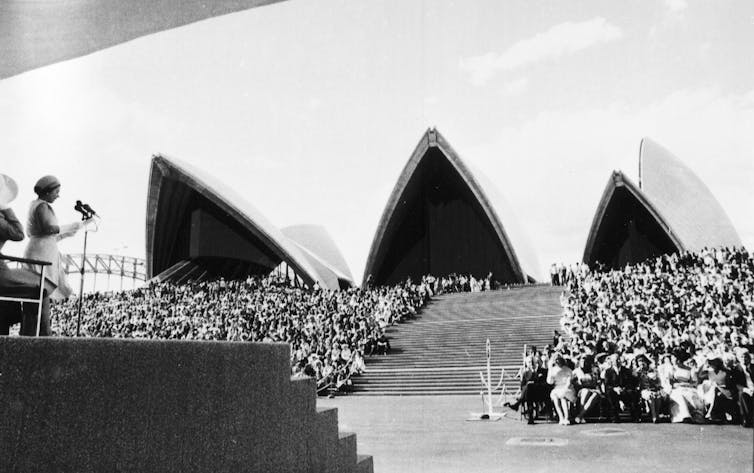
Invited guest, not ruler of the land
As early as the 1963 tour, the nation-wide royal fervour had dimmed a little. The 1963 visit witnessed smaller crowds and fewer mass public events. When Prime Minister Robert Menzies courted the queen with the now-famous line, “I did but see her passing by, and yet I love her till I die”, the ensuing blushes – including the queen’s own – reflected many Australians’ growing sense of embarrassment at public displays and unquestioning expressions of deference.
Despite this, Menzies’ displays of public ardour saw him being granted The Order of the Thistle shortly after, a bestowal which must surely remain the envy of some subsequent prime ministers.
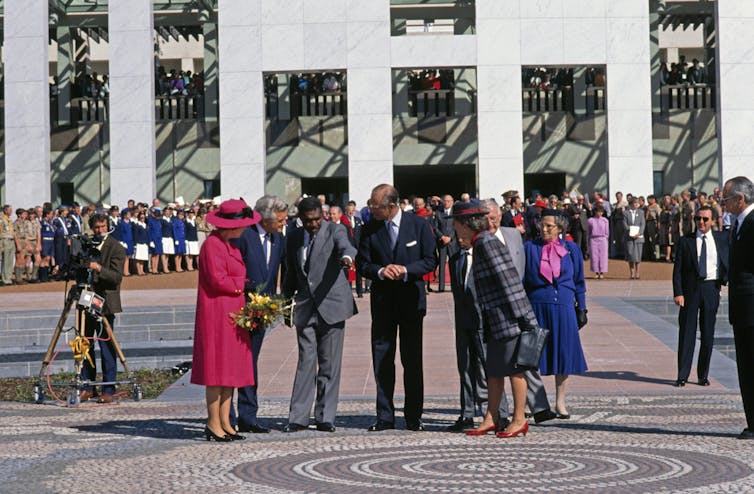
The 1977 Silver Jubilee and 1988 Australian bicentenary visits perhaps marked the end of a period of royal tours as overt celebrations of Australia’s ties to Britain. This new flavour of tours positioned the sovereign as an invited guest to an independent, modern and multi-cultural nation.
On her 10th tour in 1986, the queen returned to sign the Australia Act , which brought to an end the ability of the UK to create laws for Australia.
Her role as our sovereign subtly transformed from cutting ribbons and opening Parliament to signing the documents that slowly, by degrees, contributed to the cutting of Australia’s ties to the UK and the Crown.
A question of the republic
By the 12th tour in 1992, the cost of the queen’s visits to Australia were increasingly scrutinised by a public feeling largely indifferent about the royal family. The prime minister of the day, Paul Keating, was seen not so much as an entranced liege lord revelling in the opportunity to see his sovereign “passing by” as one who instead – unthinkingly – committed an act of lèse majesté by placing his bare hand on the royal back and waist as he guided her through the crowd.
The gloves, it seemed, were coming off.

The queen made it clear in her last visits to our shores that whether or not Australia should become a republic was a decision for its own citizens to make. Her official announcement after she learned of the result of the 1999 Republic Referendum confirmed this:
I have always made it clear that the future of the Monarchy in Australia is an issue for the Australian people and them alone to decide, by democratic and constitutional means. … My family and I would, of course, have retained our deep affection for Australia and Australians everywhere, whatever the outcome.
In the last decades of her life, the queen retained the affection of many. Her popularity seemed to grow in line with Australians’ increased disenchantment with their home-grown political leaders: the former prime ministers Malcolm Turnbull and Julia Gillard are right to have sensed that any discussion about an Australian republic would have to wait until after Elizabeth II’s death.
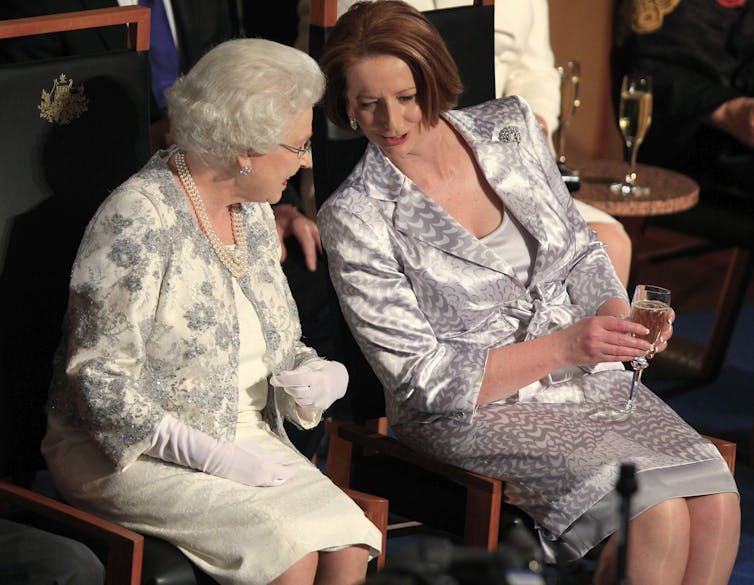
Queen Elizabeth II reigned across seven decades and her tours to Australia served as a marker of Australia’s changing relationship with the Crown as well as with its own colonial past and national identity.
Almost certainly, Elizabeth II’s reign as the stalwart, loyal, dutiful, and most cherished and admired of “Glorianas” is one we are unlikely ever to see again.
Correction: the article previously stated the queen was on her way to Australia in 1953 when she learned of her father’s death. This has been corrected to 1952.
- Queen Elizabeth II
- Australian Republic Movement

Events and Communications Coordinator

Assistant Editor - 1 year cadetship

Executive Dean, Faculty of Health

Lecturer/Senior Lecturer, Earth System Science (School of Science)

Sydney Horizon Educators (Identified)

We are open today!
Our trading hours:
- Tuesday: 6am - 3pm
- Thursday: 6am - 3pm
- Friday: 6am - 3pm
- Saturday: 6am - 4pm
- Sunday: 9am - 4pm
Please note specialty shopping opens at 9am every Market day.
Search for Traders, Products, News & More...
- Shop Online
- Events & Tours
- News & More
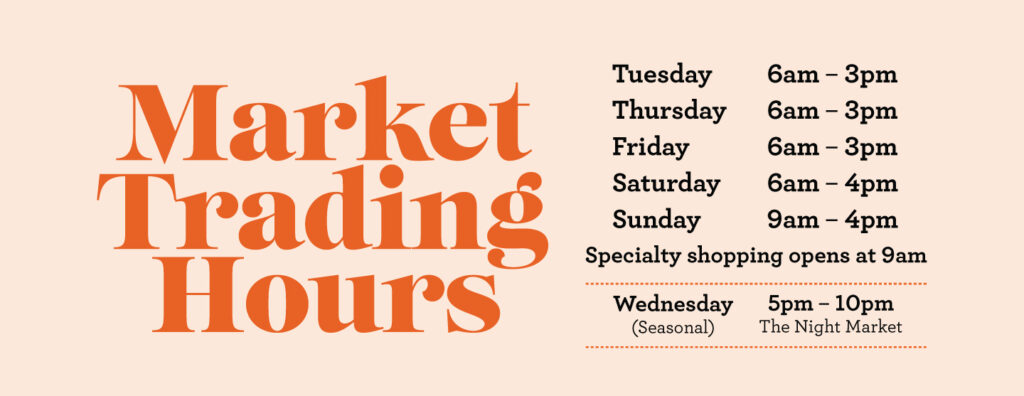
Make it a Queen Vic Market day, there is so much to see, do and taste.
Queen Vic Market Tours
Our Ultimate Foodie Tour is a delicious and fascinating guided walking tour of the iconic Queen Victoria Market. Taste the freshest produce, discover unique ingredients, learn tips and tricks for shopping and cooking, discover the Market’s history and meet some of our beloved Market traders. Click here to book a tour today.
The Market also offers various Educational Tours which are perfect for school groups. Click here to read more.
Changes to Queen Street Access
Market infrastructure works have now commenced on Queen Street and will affect customer parking and access in this area.
Through-traffic and customer vehicles will not be permitted on Queen Street (between Therry and Victoria Streets) between 6am – 9.30am on Tuesday, Thursday and Friday. Outside of these times on Tuesday, Thursday, Friday and all-day Saturday, vehicle access will be permitted with a 30-minute restriction on parking. Queen Street will continue to be closed between 8:30am – 4:30pm on Sunday.
Nearby parking, including accessible DDA parking is available in both the Open Air and Undercover Car Parks, as well as on Therry Street.
Information Hub
Drop by the Information Hub and ask our friendly staff for all the best tips for your visit to the Market, or pick up a market shopping bag and a range of other merchandise. We are located on the corner of F Shed and Queen Street.
Opening hours for the Information Hub are:
- Tuesday, Thursday & Friday 9am-3pm
- Saturday & Sunday 9am-4pm
You can also contact our customer service team via:
- Phone 03 9320 5822 (during opening hours)
- Email info@qvm.com.au
- Or through our online form
Directions & Map
A short walk from the City centre, Queen Victoria Market is bounded by Peel, Franklin, Victoria & Elizabeth Streets.
Parking is available in both our Open Air Car Park accessible via Queen St, and our new Undercover Car Park accessible via Queen St.
There is free bike parking in and around the Market. Major bike lanes leading to the Market run along Royal Parade and Victoria Street.
It’s also super easy to catch a tram! Just jump on Yarra Trams route 19, 57, 58 or 59 which stop right outside the Market.
Only a 7 minute walk from Melbourne Central and Flagstaff Stations. Walk north along Elizabeth or William Street.
Regional Train
V/Line trains run from Regional Victoria to Southern Cross station, then a 15-20 minute walk from the station.
Airport Shuttle
SkyBus run from Melbourne (Tullamarine) Airport to Southern Cross station, then a 15-20 minute walk from the station.
Cruise Arrivals
Take Yarra Trams route 109 from Station Pier (Stop 129, Beacon Cove) to Stop 5 (Elizabeth St/ Collins St). Then jump on route 19, 57 or 59 which stop right outside the Market.
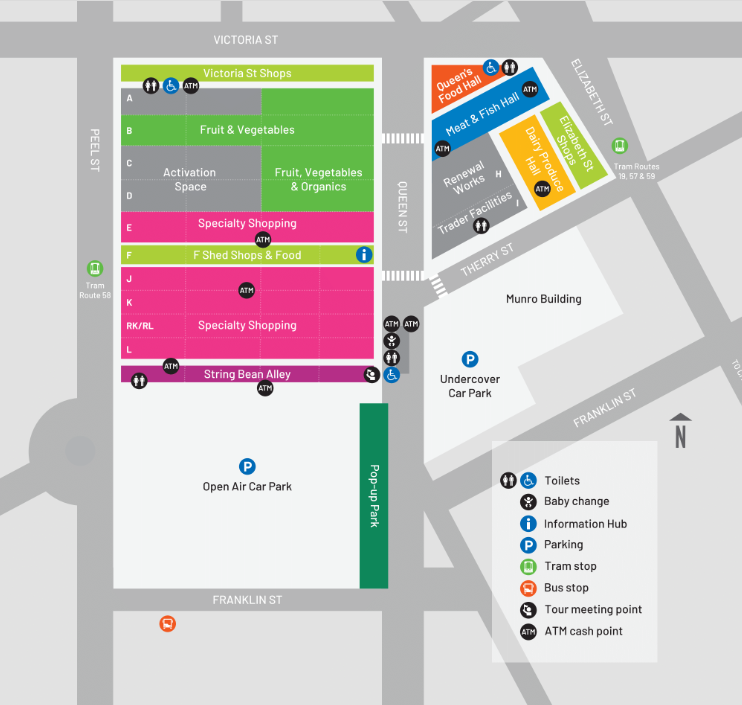
Find a shop or stall
Book a tour, looking for something.
Enter your username and password to login
Remember me
Forgot Password?
Fill in your details below to create an account.
Deliver to Postcode or Click & Collect
Before we add this item to your Cart, please select your delivery option. You can change this any time, by clicking Delivery or Click & Collect options in the menu.
Which postcode do you wish to have your order sent to?
The Queen leaves a complicated legacy for Indigenous Australians
For more than 200 years, Aboriginal and Torres Strait Islander people have made direct appeals to the royal family over past and current policies that have seen Indigenous people subjugated on their own lands.
Key points:
- Some Indigenous Australians are frustrated the Queen did not say more about their treatment
- Others remember her as a "good and gracious" leader
- King Charles will reign in an era of growing understanding of Indigenous rights
In passing, the Queen leaves behind a complex legacy for First Nations people and there remain many diverse views on her decades-long reign.
The monarch made more than a dozen visits to Australia, starting at a time when Indigenous people were forced to live on missions and on the margins, with few rights.
In 1954, on her first tour of Australia, the Queen toured towns across regional Australia, including Shepparton in Victoria, the lands of the Yorta Yorta.
The Queen's procession went by "The Flats", where Aboriginal people lived in makeshift humpies, but local authorities had tried to shield the community from the monarch's view by erecting hessian screens.
"[The Queen] was in a trail of cars coming across the highway and [the local authorities] cut branches off trees and threaded them through the fence so that when she came past the area … she wouldn't see all the people camping there and ask any questions about what was happening," Yorta Yorta and Dja Dja Wurrung elder Aunty Fay Carter, 87, said.
"We accepted these sort of things happening to us … but now as I've gotten older and more aware of what happened, I don't feel very good about it."
Almost half a century later, on a return visit to Australia that took in NSW, Victoria, Tasmania, ACT and WA, the Queen toured the regional NSW town of Bourke.
Wiradjuri elder Frank Doolan — better known as "Riverbank Frank" — said he was "shocked and saddened" to hear of the Queen's passing.
Mr Doolan spent his formative years in Bourke and while he was not there during the momentous visit in March 2000, he said it left a positive and lasting impression on his community.
"It was lovely and they were honoured she wanted to go out there and especially to meet them," he said.
"They were surprised at how tiny she was and I guess it would be a surprise too because in many ways the Queen, and all she represents, is larger than life."
He said when he was growing up, images of the Queen stood proudly in every classroom and, although that has now changed, her influence touched many.
"Regardless of how you feel politically … I think all of us have got to agree that we have been witness to a very great and gracious woman," he said.
"As an Indigenous man in Australia, I have no problem with the idea that overnight Charles has become King Charles and I have no issue or problem with the idea that his late mother, God rest her soul, spent 70 years on the throne too."
As the world reflects on the legacy of the longest-reigning monarch in British history, Wiradjuri person Sandy O'Sullivan said some Aboriginal and Torres Strait Islander people felt the Queen had a responsibility to enact change to better the lives of First Australians.
"There is this massive concern that everything that's happened to Indigenous people under her reign, has barely been commented on by her," they said.
"[She] has barely had any impact in terms of reparations, in terms of land back, in terms of all incursions that have occurred across the many decades that she's reigned."
Professor O'Sullivan said a lot of First Nations people were frustrated the Queen did not do more.
"We've experienced over decades that work not being done," they said.
"She had a voice that we didn't have and that voice would have gone a long way to effecting change.
"Hopefully that's what we see now."
The next generation
King Charles III will begin his reign at a time when there is growing pressure on Commonwealth nations to honour or enact treaties with Indigenous peoples, and to give First Nations people greater autonomy.
For decades, Indigenous activists have been critical of the monarchy and its role in the colonisation of many nations which remain in the Commonwealth today.
This sense of activism harks back to 1933, when Yorta Yorta leader William Cooper drew up a petition to King George V, the Queen's grandfather.
He called for representation for Aboriginal people in the Commonwealth parliament and said Aboriginal people must have a say in the laws which affected them, much like today's debate over a Voice to Parliament.
The letter and petition never reached King George V but in 2014, William Cooper's grandson passed it on to Queen Elizabeth II.
Indigenous senator Pat Dodson recently told an ABC documentary Australia needed to reckon with its colonial past in order to move on with its future.
"We really can't sever our ties with Britain until there's some restitution, some acknowledgement of how we've become dispossessed," he said.
He said when he met with the Queen at Buckingham Palace ahead of the 1999 republic referendum, he found the experience profoundly moving.
"She treated us with respect and she seriously wanted to know what our concerns were," Senator Dodson said.
"She treated us as human beings … she came across as genuinely interested in what was happening to us as First Nations."
The 1999 referendum ultimately failed but in Australian and New Zealand parliaments, there have been continued calls from Indigenous politicians for both nations to part ways with the monarchy.
Greens senator Lidia Thorpe, a Gunnai, Gunditjmara and DjabWurrung woman, was directed to repeat the oath of allegiance for Australian parliamentarians last month after she initially described the Queen as a "coloniser".
And the Māori Party in New Zealand said this year that a split with the monarchy would "be an opportunity to re-imagine a more meaningful and fulfilling partnership".
Indigenous rights and the next generation
For the next generation of royals, engagement with First Peoples is seen as a critical component of tours and duties across the Commonwealth.
Before they left their positions as senior working members of the royal family, Prince Harry and his wife Meghan Markle, the Duchess of Sussex, made a deliberate decision to meet with multiple Aboriginal communities.
For many Indigenous people across the Commonwealth, Meghan Markle's marriage to Prince Harry was the first time they had seen the family grapple publicly with accusations of systemic racism and a lack of diversity.
King Charles will reign in an era where there is a growing understanding of Indigenous rights and activism across the Commonwealth.
Elsewhere, including in the Caribbean, some Commonwealth members have debated cutting ties with the monarchy.
Prince William and Kate, the Duchess of Cambridge, were met with protests this year on a visit to Jamaica, and calls for apologies and reparations over slavery and historical mistreatment.
King Charles has signalled he's aware that nations will continue debating their place in the Commonwealth but said this year it would be "a matter for each member country to decide".
Aunty Fay Carter said she hoped to see a formal apology in the future from the royal family for the injustices inflicted upon Indigenous Australians under British colonial rule.
"It would just make us feel as though they did, or they do, care about what happened in the past … it'll just help us soften our thoughts about the monarchy," she said.
"This is their history too, not just our history and so hopefully [King Charles] will have a different attitude and might not be as conservative as the Queen was."
She said she hoped there would one day be a treaty acknowledging the past wrongs.
"It'll be good if [King Charles] can come up with something that can help us overcome some of the pain and suffering that our people have been put through by his people."
- X (formerly Twitter)
- Indigenous (Aboriginal and Torres Strait Islander)
- Indigenous (Other Peoples)
Statue of Queen Victoria
The foundation stone for a statue of Queen Victoria in Sydney, Australia, was laid as early as 1881 to coincide with the royal visit of Prince Edward and Prince George of Wales. This statue, commissioned for the Queen’s Golden Jubilee in 1887, was unveiled by the British colonial governor in front of over fifty thousand spectators. Upon the queen’s death in 1901, the statue served as the focal point for expressions of mourning. Over the following decades, the statue remained an important ceremonial site for manifestations of colonial loyalty. A photograph from 1930 shows the statue decorated for Empire Day, commemorating the queen’s birthday, an event that continued to be celebrated in many cities long after Victoria’s death.
!["Centennial Celebrations at Sydney— Unveiling the Queen’s Statue": unveiling by Lord Charles Robert Carrington, Governor of New South Wales, and Lady Carrington, on January 24, 1888. [Wood engraving, main image by F.A. Sleap (?) and inset by George Rossi Ashton. *Illustrated Australian News*, February 11, 1888. http://trove.nla.gov.au/work/167543450?redirectedFrom=12174629&q&versionId=182603593.] "Centennial Celebrations at Sydney— Unveiling the Queen’s Statue": unveiling by Lord Charles Robert Carrington, Governor of New South Wales, and Lady Carrington, on January 24, 1888.](https://interactive.britishart.yale.edu/sites/default/files/styles/ycba_thumbnail/public/Fig_34.6_0.jpg?itok=xkxEWxD4)
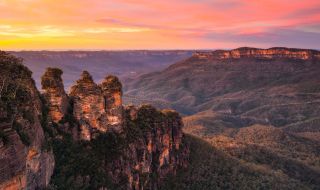
- NSW Road trips
- Accommodation
- Be inspired
- destinations
- sydney city
- city centre
- attractions
Queen Victoria Building
The Queen Victoria Building (QVB) is a five level shopping centre occupying an entire block of George Street in the heart of Sydney's CBD. The historical building is Sydney's most iconic and prestigious shopping destination, attracting millions of local and international visitors each year. Home to leading Australian and international designers, the shopping centre houses over 140 fashion boutiques, jewellery shops, specialty stores, cafes and restaurants.
Opened in 1898, the QVB is rich in history and architectural splendour, displaying elaborate Romanesque architectural features, glorious stained glass windows, and magnificent light filled atriums. The dominant feature is the mighty centre dome, which during the Christmas shopping season, is occupied by a giant Christmas tree, a must see for any visitor. To learn more about the building's story of creation, near destruction and modern way preservation, book the QVB History Tour with one of the expert guides.
Accessibility
Disabled access available, contact operator for details.
More Like This
It's time to feel new.
Pure joy as you wake to the sunrise. Awe as you make it to the snowy peak. A sense of adventure as you motor across red plains. The relief of rejuvenation as you wade into an alpine stream. Connection as you taste native, fragrant leaves. A sense of belonging as you return to your favourite holiday house. Freedom as you dash into the waves. Discover the endless feelings a visit to NSW can inspire.
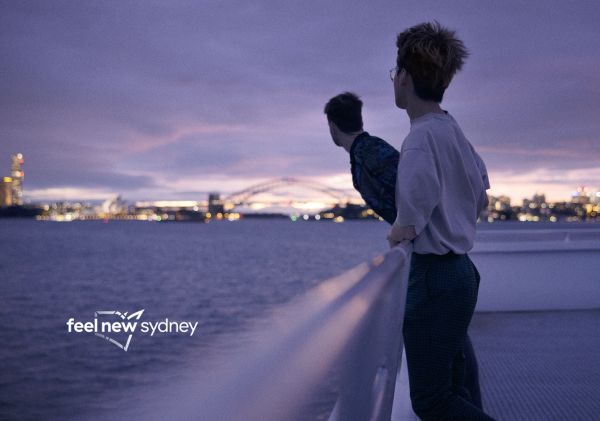
Subscribe to our newsletter
Stay connected to Sydney for all the latest news, stories, upcoming events and travel inspiration.
Discover Somewhere New
All the insider news, tips and inspiration you need to plan your next trip, delivered straight to your inbox.
Destination NSW acknowledges and respects Aboriginal people as the state’s first people and nations and recognises Aboriginal people as the Traditional Owners and occupants of New South Wales land and water.
- NSW Government
- Destination New South Wales (Corporate site)
Sydney.com is the official tourism site for Destination NSW. © Copyright 2024 Destination NSW. All rights reserved
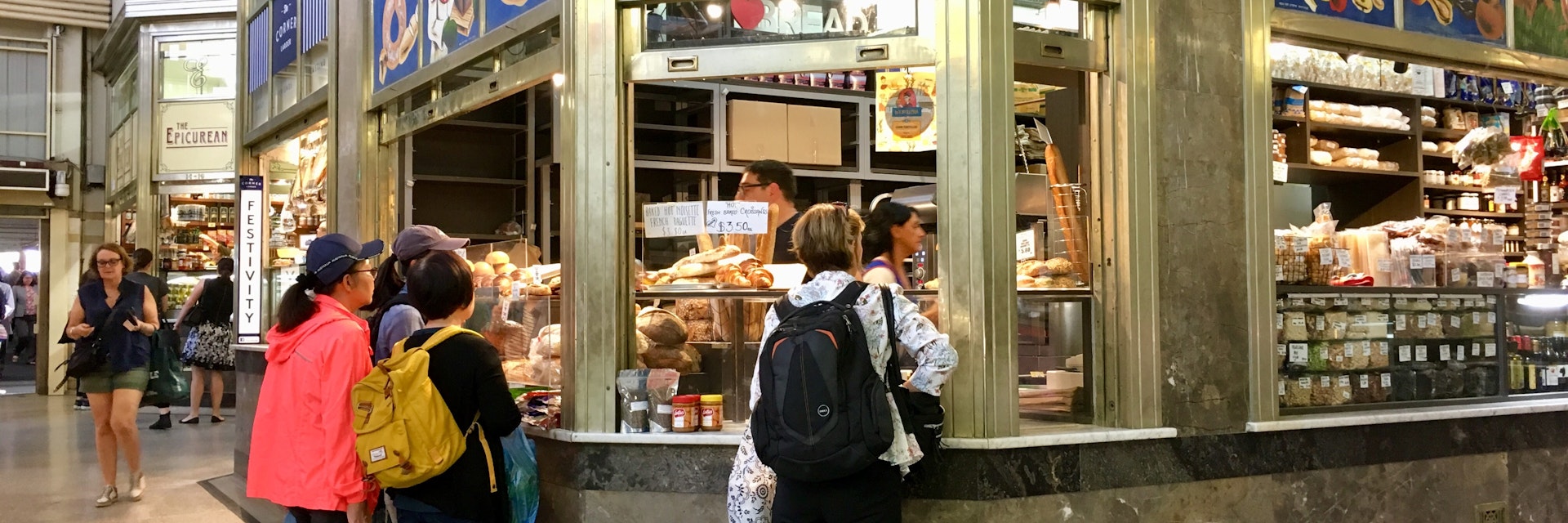
©jax10289/Shutterstock
Queen Victoria Market
Top choice in Melbourne
With more than 600 traders, 'Vic Market' is a large open-air market brimming with food, shopping and cultural experiences. Early mornings are best for fresh produce, taste-testing or dodging the booming cries of stall holders. Lunch hour sees shoppers queuing for street food and flower stalls, serenaded by a rotating cast of buskers.
The deli hall, lined with stalls selling everything from Australian cheeses, to Polish sausages and kangaroo biltong, has some Art Deco era flourishes.
Clothing and knick-knack stalls dominate on Sunday; they're big on variety, but don’t come looking for style (if you’re in the market for sheepskin moccasins or cheap T-shirts, this is the place).
Various tours are run by the market including heritage, cultural and food tours; check the official website for details.
Queen Victoria Market night market
In summer – and again in winter – there’s a hawker-style Night Market on a Wednesday after hours (5pm to 10pm) with pop-up bars, outdoor seating, live music and DJs, plus local makers selling boutique wares.

The market has been here for more than 130 years; before that, from 1837 to 1854, it was the old Melbourne Cemetery. Remarkably, around 9000 bodies remain buried here, from underneath Shed F to the car park leading to Franklin St. There's a small memorial on the corner of Queen and Therry Streets.
Redevelopment and parking
Note that an ongoing redevelopment program to preserve various market buildings is being rolled out in various phases, so you might find construction work on in sections when you visit.
Parking can be an issue, but most people use the many public transport options and bicycle parking is also available.
cnr Elizabeth & Victoria Sts. Melbourne
Get In Touch
03-9320 5822
https://www.qvm.com.au/
Lonely Planet's must-see attractions
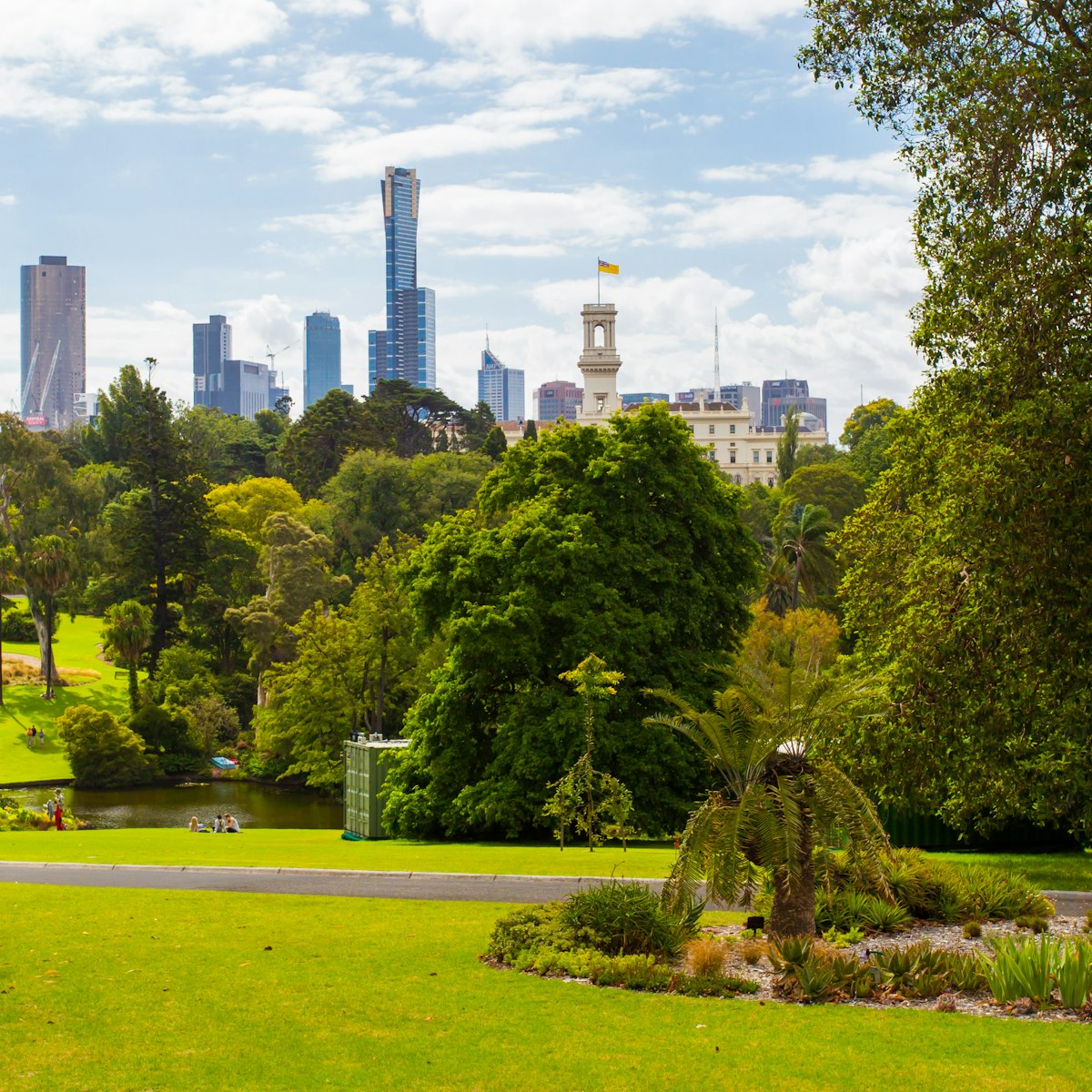
Royal Botanic Gardens
Considered one of the finest examples of Victorian-era landscaping in the world, Melbourne’s Royal Botanic Gardens draw over two million visitors a year…
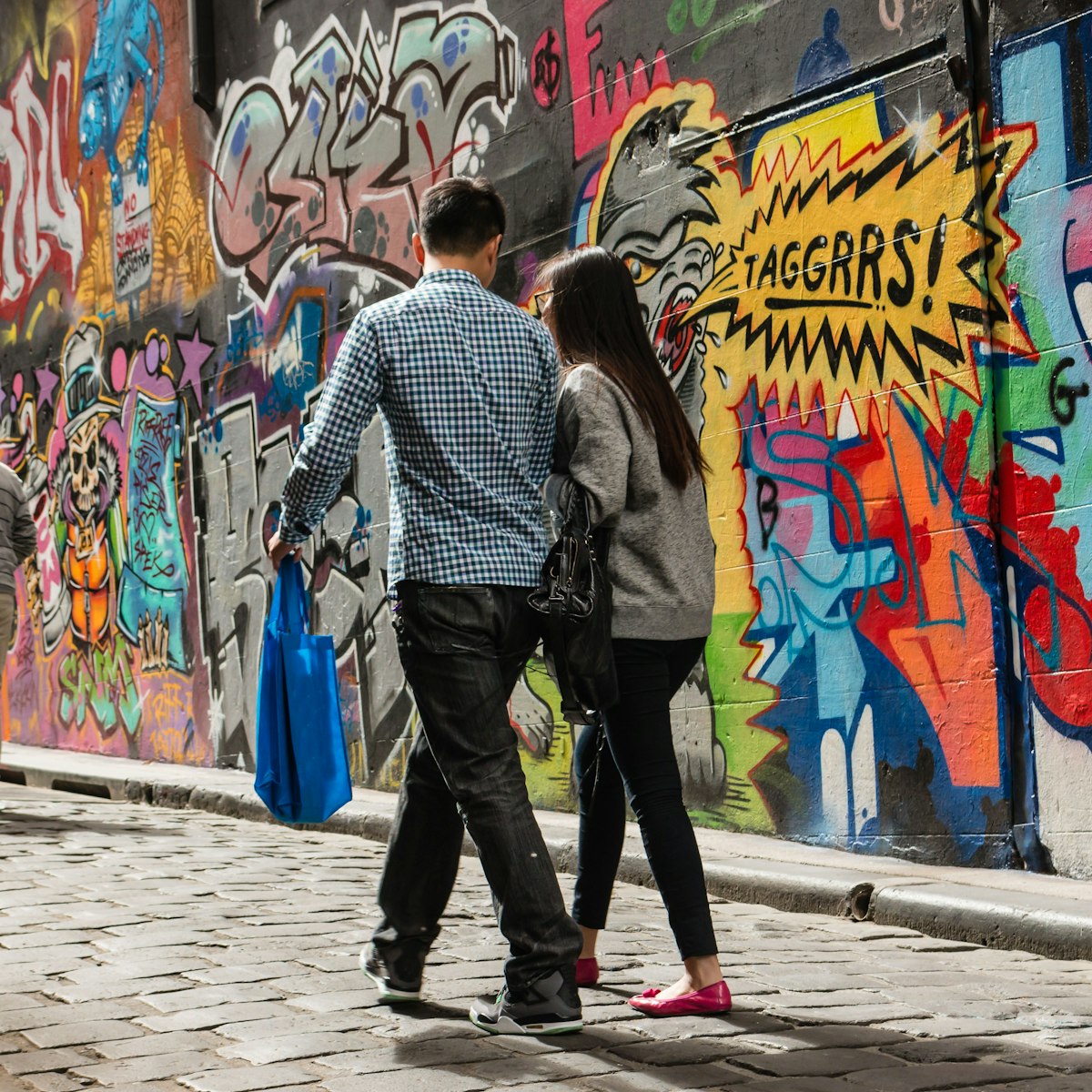
Hosier Lane
Melbourne's most-celebrated laneway for street art, Hosier Lane's cobbled length draws camera-wielding crowds to its colorful canvas of graffiti, stencils…
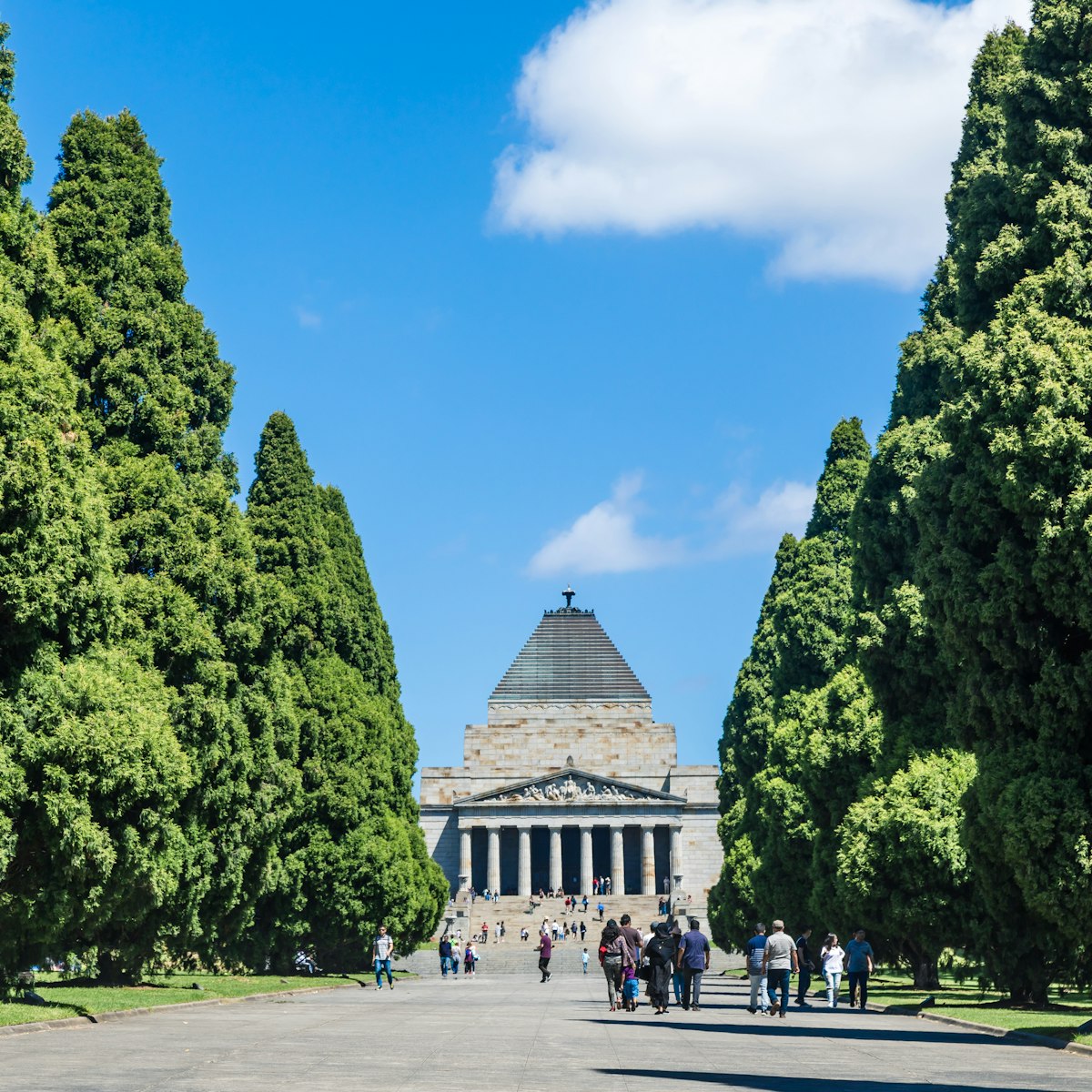
Shrine of Remembrance
One of Melbourne's icons, the Shrine of Remembrance is a commanding memorial to Victorians who have served in war and peacekeeping, especially those…
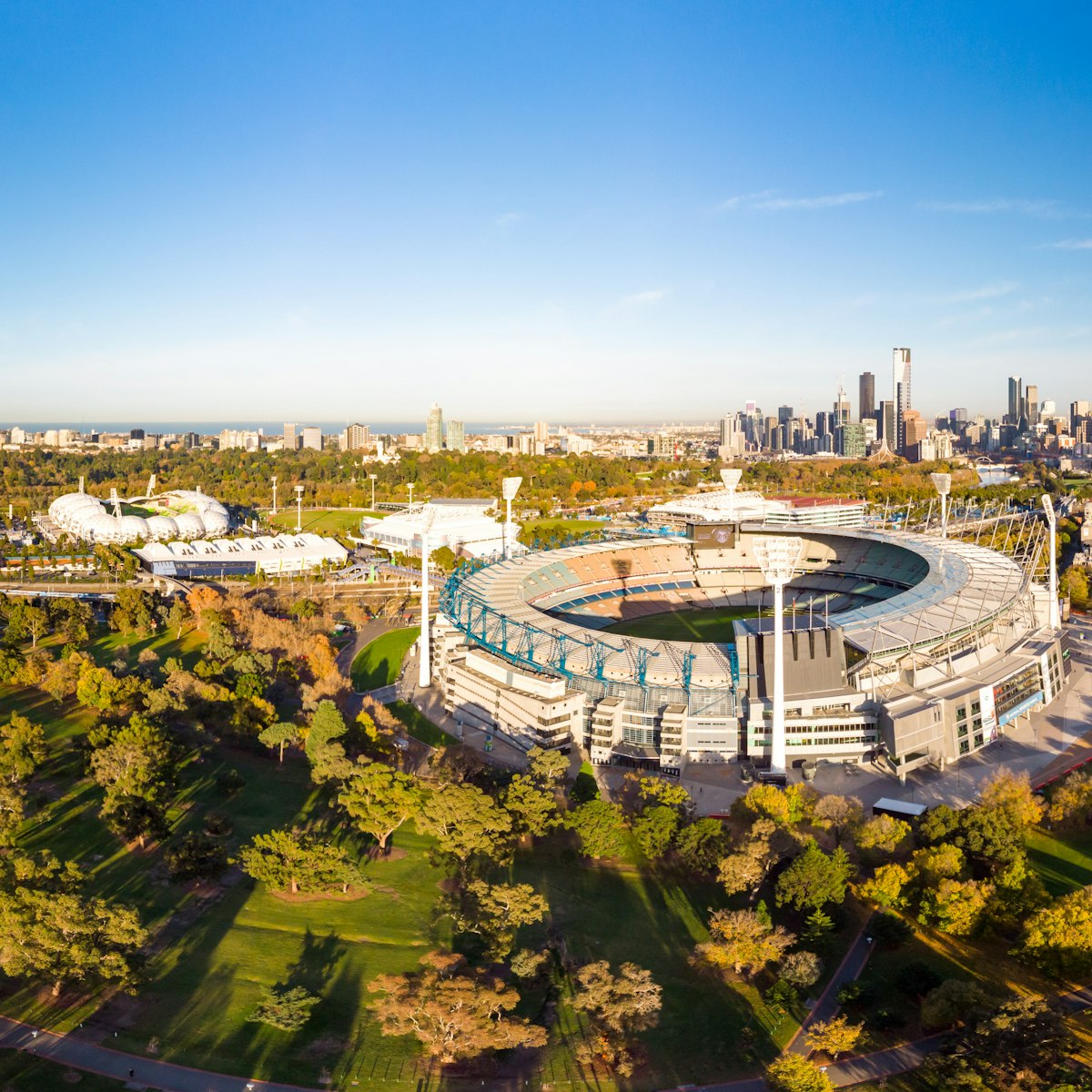
Melbourne Cricket Ground
With a capacity of 100,000 people, the "G" is one of the world’s great sporting venues, hosting cricket in summer and AFL (Australian Football League,…
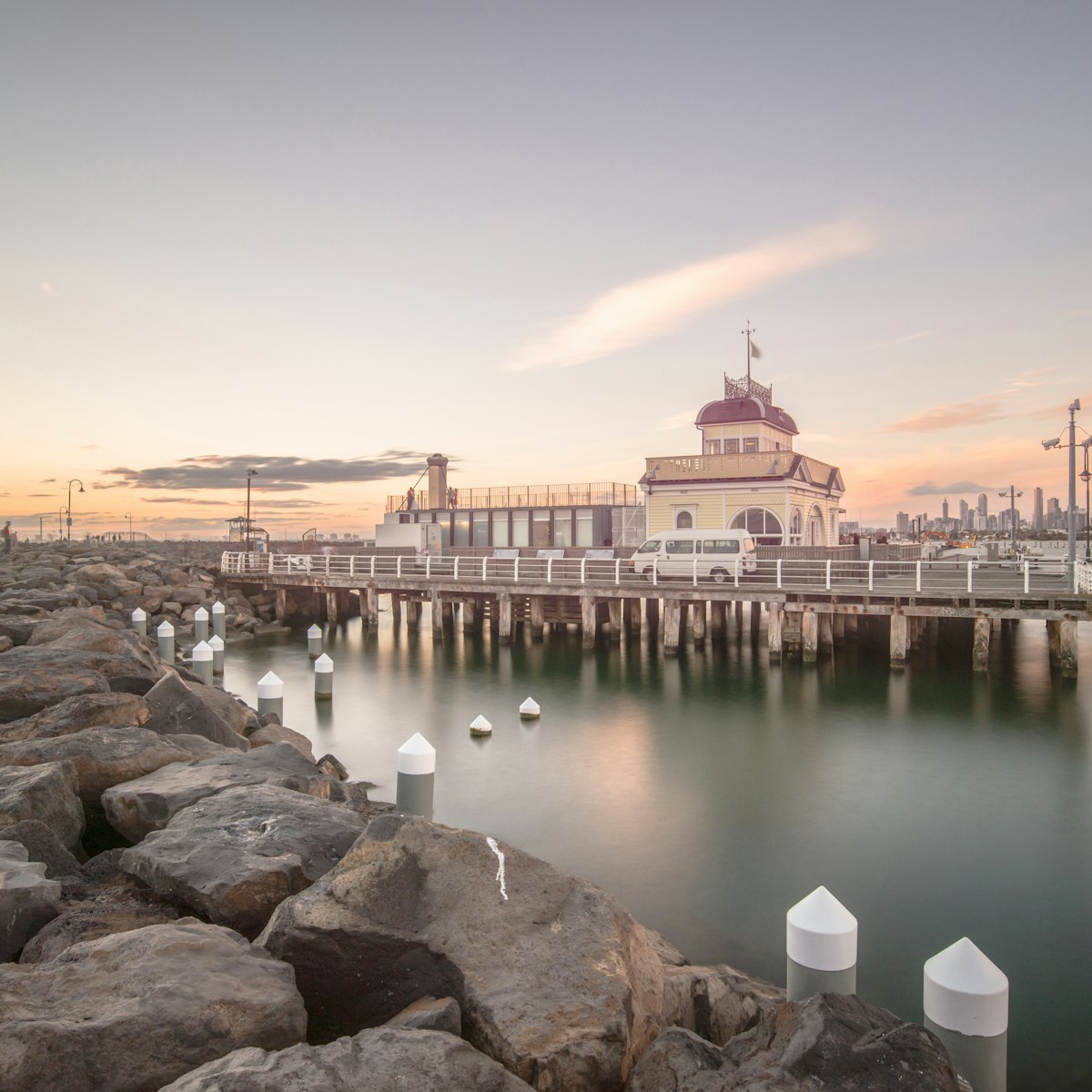
St Kilda Foreshore
With a palm-fringed promenade, sandy beach and eclectic architecture, St Kilda’s seaside appeal lands somewhere between Brighton in England and Venice…
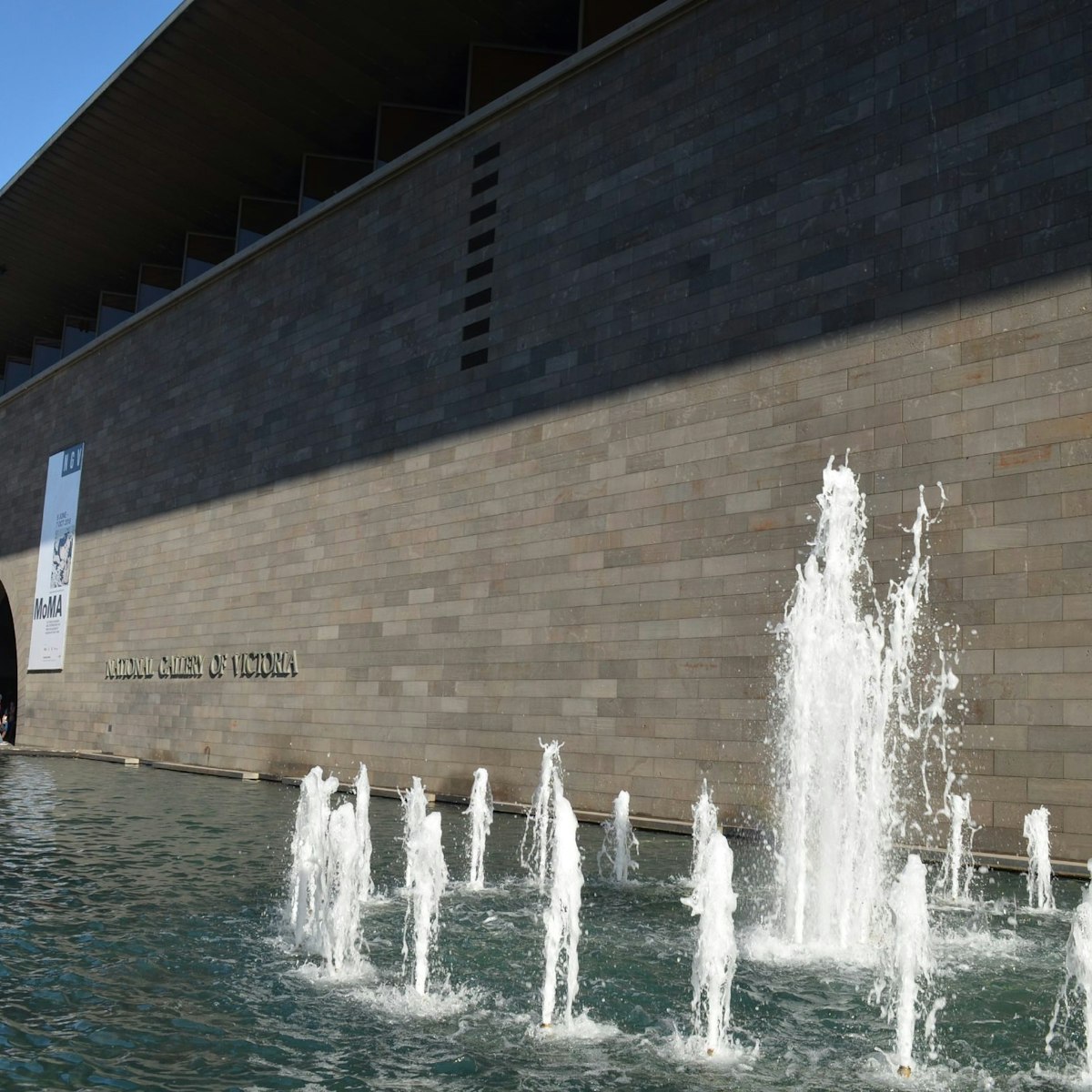
NGV International
Housed in a vast, brutally beautiful, bunker-like building, the international branch of the NGV has an expansive collection, from ancient artefacts to the…
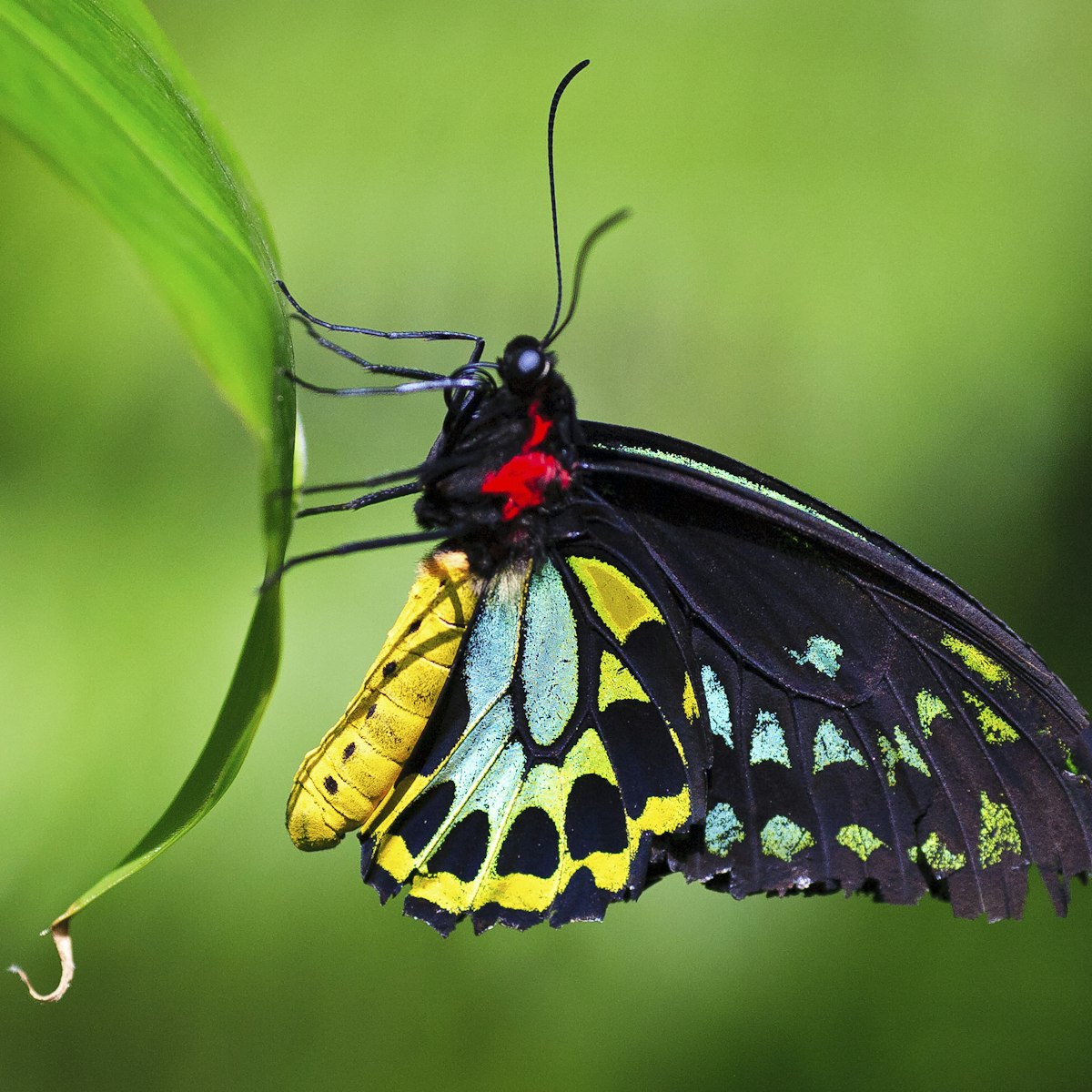
Melbourne Zoo
Established in 1862, this compact zoo remains one of the city’s most popular attractions and continues to innovate, having become the world's first carbon…

Federation Square
One of the city's newest public spaces and an urban focal point, Federation Sq is a place to meet, celebrate, protest, watch major sporting events or…
Nearby Melbourne attractions
1 . Blender Lane
This unsigned laneway off Franklin St features some of Melbourne's best street art, showcasing the work of underground artists. It's named after the…
2 . Flagstaff Gardens
Originally known as Burial Hill, these gardens were the site of Melbourne's first cemetery, where eight of the city’s early settlers were buried. If that…
3 . Hellenic Museum
Housed in a beautiful neoclassical building that was once the Royal Mint, this small museum is dedicated to Greek immigrants who moved here in the 1950s…
4 . Old Melbourne Gaol
Dating back to 1841, this bluestone prison was in operation until 1924 and decommissioned in 1929. It's now a museum where you can tour the tiny, bleak…
5 . State Library of Victoria
This grand neoclassical building has been at the forefront of Melbourne's literary scene since 1856. When its central La Trobe Reading Room was completed…
6 . Royal Arcade
Built between 1869 and 1870, this Parisian-style shopping arcade is Melbourne’s oldest and has managed to retain much of its charming 19th-century detail…
7 . Chinatown
For more than 150 years this section of central Melbourne, now flanked by five traditional arches, has been the focal point for the city's Chinese…
8 . West Space
One of Melbourne’s oldest nonprofit, artist-run galleries, West Space has a varied exhibition schedule featuring young and emerging artists. Expect a…
Queen Victoria Building Sydney
Rated out of 5 Read Reviews
The Queen Victoria Building is possibly the most beautiful shopping centre in the world.

The magnificent Queen Victoria Building, or QVB for short, is an architectural delight that should not be missed during you visit to Sydney. It is definitely one of the most beautiful shopping centres in the world and stunning to say the least. The QVB was completed in 1898 in the midst of a severe recession. The intricate Romanesque architecture topped with a centre dome required the employment many skilled craftsmen who would otherwise have been out of work during this difficult time.
When it first opened the QVB housed a concert hall, offices, warehouse space and shop space for many different services and tradespeople. Eventually the Concert Hall was replaced by the City Library and then, after a major retrofit in the 1930's, Sydney's City Council became the primary tenant.
The building gradually became run down again over the years and there was even some consideration of demolition. Fortunately, through a partnership agreement the building was painstakingly restored again between 1984 and 1986 followed by another refurbishing in 2009 for a total investment of $134 million.
The Queen Victoria Building now has many boutique shops and services throughout it's 4 levels. Outside the south end of the building the Bicentennial Plaza features a statue of Queen Victoria and the Royal Wishing Well which raises funds to benefit children who are deaf or blind.
There are many more interesting features and details in this incredible and beautifully detailed building - too many to mention here. This is one shopping centre where you may want to bring your camera.
Nearby attractions: Sydney Tower , Pitt Street Mall , Sydney Town Hall , Saint Andrew's Cathedral and Hyde Park .
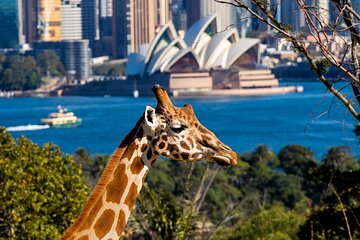
- See the complete line of Sydney Experiences on Viator
Facts For Your Visit
Queen Victoria Building Sydney Hours: Opening hours may differ on holidays
- Monday: 9:00 AM – 6:00 PM
- Tuesday: 9:00 AM – 6:00 PM
- Wednesday: 9:00 AM – 6:00 PM
- Thursday: 9:00 AM – 9:00 PM
- Friday: 9:00 AM – 6:00 PM
- Saturday: 9:00 AM – 6:00 PM
- Sunday: 11:00 AM – 5:00 PM
Address: 455 George St, Sydney NSW 2000, Australia
Phone: (02) 9265 6800
Official Website: Queen Victoria Building Sydney
Queen Victoria Building Sydney Reviews
How to get to Queen Victoria Building Sydney by Train
By Light Rail L2: Exit at QVB which is right across the raod from the Queen Victoria Building.
By Train: Town Hall Station has a direct underground passage to the QVB (1 minute) or Exit St. James Station onto Elizabeth Street and cross over and continue west on Market Street (3 minutes).
Map & Instant Route Finder
Click&Go Map and Route Finder with public transit, walking, driving or cycling directions. Get up-to-the-minute transit times for your route.
Accommodations near Queen Victoria Building Sydney:
Photo gallery.
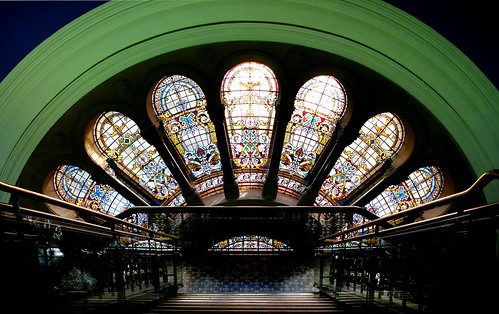
Please provide consent and/or disable ad blocker to view the video.

Melbourne Must-See: Queen Victoria Market
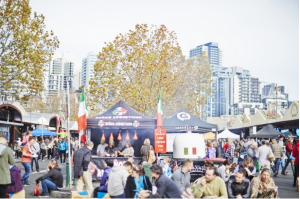
Photo: Queen Victoria Market
For that perfect farmer’s market experience in Melbourne, look no further than Queen Victoria Market. Since the 19 th century, this market has been Melbourne’s go to street market for produce, meat, home goods, gifts and more.
So grab a cup of coffee from a local cart, dive in to some amazing street food and walk with us as we peruse Queen Victoria Market in Melbourne.
Queen Victoria Market spans nearly 20 acres. This makes it the largest open-air market in the Southern Hemisphere, a record you probably didn’t even know existed. Victoria Market is huge, on par with other great markets in the world like the Grand Bazaar in Istanbul, the Fish Market in Tokyo and Pike Place Market in Seattle.
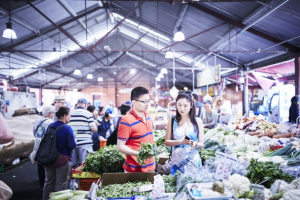
Photo: Roberto Seba / Tourism Australia
With over 600 vendors selling their wares five days a week, this is not your average farmer’s market.
Queen Victoria Market is divided in to sections called “precincts”. Looking for great produce and natural products? Start things off in the “Organics Precinct”. There you’ll find local farmers and co-ops selling organic produce and meat. You’ll also find healthy, sustainable products created by health-conscious artisans. The largest and most diverse array of organic produce in the entire city is found right at this market.
Craving a bite to eat? Head to the Market Place Food Court. World-class chefs and family run establishments alike compete for your taste buds at the food court. For a real round-the-world lunch, grab a few small plates from different vendors for a sample of Melbourne’s eclectic cuisine.
Where else can you sip Chinese tea, snack on Japanese sushi, dine on curry from Sri Lanka and finish it off with Tiramisu from Italy?
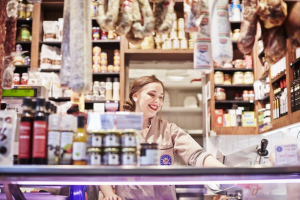
Tip: Even though you’re all the way over in Australia, stop by the American Doughnut Kitchen. These confection-experts set up shop in a 1950’s travel van where they prepare world-famous “hot jam doughnuts”.
After you’re fueled up on amazing eats, you’ll have the energy to comb the “General Merchandise Sheds”. This precinct is a sort-of flea market meets farmer’s market, with vendors selling an immense variety of goods, gifts and kitsch. From clothing jewelry and handcrafts, to cell phones, electronics and movies. Spend enough time in this precinct of the market and you’ll find anything you could ever need and somethings you probably don’t. You can even buy a stuffed Alpaca made of Alpaca wool. We’ll let you decide whether you need that or not.
The Vic Market’s newest section is String Bean Alley, where vendors set up shop in rows of re-purposed shipping containers. Upscale, handcrafted arts and crafts by local artists are for sale in this boutique section of the market. Photographers, painters and other visual artists also have galleries set up in String Bean Alley offering paintings and prints.
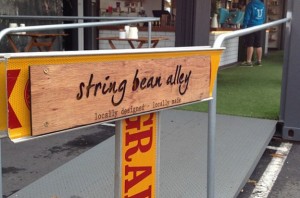
Queen Victoria Market is open Tuesday and Thursday – Sunday. During certain seasons, the market opens its doors on Wednesdays for the Night Market. Street performers, musicians and other live entertainment join vendors for a great night time destination event. The Night Market is a festive event that attracts thousands for a night out in Melbourne.
Make sure you carve some time out in Melbourne for the Queen Victoria Market. It’s the perfect spot to pick up some local veggies, shop for a unique gift, or simply for a lunch out in downtown Melbourne.
Want to start planning your trip now?
Phone us Toll Free on 1-888-359-2877 (CT USA, M-F 8.30am – 5pm) and speak to one of our expert Destination Specialists today.
- Destinations
- Dive Australia
- Places to Visit in Australia
- Travel Tips
- Vacation Planning
- Newsletter Signup
- Privacy Policy
- Terms of Service
- Australia Vacations
- Tailor-Made Vacations
- Escorted Tours
- Travel Agents
- Travel Insurance
- Travel Visa
- FAQs & Australia Travel Tips
- Travel Blog
- All Galleries
- Photographers
- Election 2024
- Entertainment
- Newsletters
- Photography
- Personal Finance
- AP Investigations
- AP Buyline Personal Finance
- AP Buyline Shopping
- Press Releases
- Israel-Hamas War
- Russia-Ukraine War
- Global elections
- Asia Pacific
- Latin America
- Middle East
- Election Results
- Delegate Tracker
- AP & Elections
- Auto Racing
- 2024 Paris Olympic Games
- Movie reviews
- Book reviews
- Personal finance
- Financial Markets
- Business Highlights
- Financial wellness
- Artificial Intelligence
- Social Media
Danish King Frederik and his Australian-born wife visit Sweden on their first official trip abroad
From left, Sweden’s Queen Silvia, Denmark’s Queen Mary, Denmark’s King Frederik X and Sweden’s King Carl XVI Gustaf stand, at Skeppsbron, in Stockholm, Sweden, Monday, May 6, 2024. Denmark’s King Frederik X has arrived in Stockholm, accompanied by his Australian-born wife Queen Mary, as he embarked on his first official visit abroad as new Danish monarch. (Jonas Ekströmer/TT News Agency via AP)
CAPTION CORRECTS BYLINE Denmark’s King Frederik X is welcomed by Sweden’s King Carl XVI Gustaf, on arrival, at Skeppsbron, in Stockholm, Sweden, Monday, May 6, 2024. Denmark’s King Frederik X has arrived in Stockholm, accompanied by his Australian-born wife Queen Mary, as he embarked on his first official visit abroad as new Danish monarch. (Ida Marie Odgaard/Ritzau Scanpix via AP)
Denmark’s King Frederik X, foreground, stands by Sweden’s King Carl XVI Gustaf, with Denmark’s Queen Mary and Sweden’s Queen Silvia, in the Hall of State at the Royal Palace in Stockholm, Sweden, Monday, May 6, 2024. Denmark’s King Frederik X has arrived in Stockholm, accompanied by his Australian-born wife Queen Mary, as he embarked on his first official visit abroad as new Danish monarch. (Fredrik Sandberg//TT News Agency via AP)
CAPTION CORRECTS SOURCE Denmark’s King Frederik X, left and Queen Mary, are welcomed by Sweden’s Queen Silvia, centre right and King Carl XVI Gustaf, upon their arrival, at Skeppsbron, in Stockholm, Sweden, Monday, May 6, 2024. Denmark’s King Frederik X has arrived in Stockholm, accompanied by his Australian-born wife Queen Mary, as he embarked on his first official visit abroad as new Danish monarch. (Ida Marie Odgaard/Ritzau Scanpix via AP)
- Copy Link copied
COPENHAGEN, Denmark (AP) — Denmark’s King Frederik X arrived in Stockholm on Monday with his Australian-born wife Queen Mary, as they begin their first official visit abroad as new Danish monarchs.
The 55-year-old Frederik was proclaimed king on Jan. 14 after his 83-year-old mother, Queen Margrethe II, who was Europe’s longest-reigning monarch, abdicated.
In the Swedish capital, Frederik and Mary were first greeted by Crown Princess Victoria and her husband Prince Daniel, who boarded the Danish royal yacht Dannebrog.
They then took the gilded Swedish Royal Barge to shore and were welcomed there by King Carl XVI Gustaf, Sweden’s longest-reigning monarch, and German-Brazilian-born Queen Silvia.
The welcome also included a cannon salute and music by Sweden’s Royal Guards, lined up on the quay at the foot of the Swedish royal palace.
Relations between the two royal houses are close. Frederik’s grandmother, Queen Ingrid who died in 2000, was a Swedish princess.
The May 6-7 visit includes meetings with Swedish Prime Minister Ulf Kirstersson and the speaker of the Swedish Parliament. A visit to a military facility is also scheduled.
Danish government members also accompanied the royals, among them Defense Minister Troels Lund Poulsen and Foreign Minister Lars Løkke Rasmussen.
Danish monarchs, whose roles are ceremonial, traditionally travel to other Scandinavian countries first. Although Frederik had a solo visit to Poland in January , it was planned before his mother’s surprise New Year’s Eve abdication.
Later this month, Frederik and Mary will travel to Oslo, where they will be greeted by King Harald V and Queen Sonja.
Frederik’s mother was t he first Danish monarch to voluntarily relinquish the throne in nearly 900 years, causing the Nordic nation to experience its first royal succession in more than a half century.
Denmark’s monarchy traces its origins to 10th century Viking king Gorm the Old, making it the oldest in Europe and one of the oldest in the world.
Danish King Frederik and his Australian-born wife visit Sweden on their first official trip abroad

From left, Sweden's Queen Silvia, Denmark's Queen Mary, Denmark's King Frederik X and Sweden's King Carl XVI Gustaf stand, at Skeppsbron, in Stockholm, Sweden, Monday, May 6, 2024. Denmark’s King Frederik X have arrived in Stockholm, accompanied by his Australian-born wife Queen Mary, as he embarked on his first official visit abroad as new Danish monarch. Credit: AP/Jonas Ekströmer/TT
COPENHAGEN, Denmark — Denmark’s King Frederik X arrived in Stockholm on Monday with his Australian-born wife Queen Mary, as they begin their first official visit abroad as new Danish monarchs.
The 55-year-old Frederik was proclaimed king on Jan. 14 after his 83-year-old mother, Queen Margrethe II, who was Europe's longest-reigning monarch, abdicated.
In the Swedish capital, Frederik and Mary were first greeted by Crown Princess Victoria and her husband Prince Daniel, who boarded the Danish royal yacht Dannebrog.
They then took the gilded Swedish Royal Barge to shore and were welcomed there by King Carl XVI Gustaf, Sweden's longest-reigning monarch, and German-Brazilian-born Queen Silvia.
The welcome also included a cannon salute and music by Sweden's Royal Guards, lined up on the quay at the foot of the Swedish royal palace.
Get the latest breaking news as it happens.
By clicking Sign up, you agree to our privacy policy .
Relations between the two royal houses are close. Frederik’s grandmother, Queen Ingrid who died in 2000, was a Swedish princess.
The May 6-7 visit includes meetings with Swedish Prime Minister Ulf Kirstersson and the speaker of the Swedish Parliament. A visit to a military facility is also scheduled.

Denmark's King Frederik X is welcomed by Sweden's King Carl XVI Gustaf, on arrival, at Skeppsbron, in Stockholm, Sweden, Monday, May 6, 2024. Denmark’s King Frederik X have arrived in Stockholm, accompanied by his Australian-born wife Queen Mary, as he embarked on his first official visit abroad as new Danish monarch. Credit: AP/Ida Marie Odgaard
Danish government members also accompanied the royals, among them Defense Minister Troels Lund Poulsen and Foreign Minister Lars Løkke Rasmussen.
Danish monarchs, whose roles are ceremonial, traditionally travel to other Scandinavian countries first. Although Frederik had a solo visit to Poland in January, it was planned before his mother's surprise New Year's Eve abdication.
Later this month, Frederik and Mary will travel to Oslo, where they will be greeted by King Harald V and Queen Sonja.
Frederik's mother was t he first Danish monarch to voluntarily relinquish the throne in nearly 900 years, causing the Nordic nation to experience its first royal succession in more than a half century.

Denmark's King Frederik X, foreground, stands by Sweden's King Carl XVI Gustaf, with Denmark's Queen Mary and Sweden's Queen Silvia, in the Hall of State at the Royal Palace in Stockholm, Sweden, Monday, May 6, 2024. Denmark’s King Frederik X has arrived in Stockholm, accompanied by his Australian-born wife Queen Mary, as he embarked on his first official visit abroad as new Danish monarch. Credit: AP/Fredrik Sandberg
Denmark’s monarchy traces its origins to 10th century Viking king Gorm the Old, making it the oldest in Europe and one of the oldest in the world.
Most Popular
Latest videos.

IMAGES
VIDEO
COMMENTS
Queen Elizabeth II reads a speech in Sydney, 1954. Since 1867, the British royal family has visited Australia over fifty times, with only six visits before 1954. Elizabeth II is the first and only reigning monarch of Australia to have set foot on Australian soil; she first did so on 3 February 1954, when she was 27 years old. During her sixteen journeys, the Queen visited every Australian ...
Below is a list of foreign visits made by Queen Victoria during her reign (which lasted from 1837 until 1901), giving the names of the places she stayed and any known reasons for her visit.. Despite being head of the British Empire, which included territory on all inhabited continents, Queen Victoria never travelled outside of Europe, only travelling as far north as Golspie, southwesterly as ...
Queen Elizabeth II first visited Melbourne in 1954 at the age of 27. Her Majesty visited Melbourne on numerous occasions during her sixteen trips to Australia, most recently in 2011. September 9 ...
The Queen and The Duke of Edinburgh leave Adelaide on HMY BRITANNIA for Melbourne. Friday 22 February 1963. At Sea. Saturday 23 February 1963. Melbourne. AM. The Queen and The Duke of Edinburgh arrive Melbourne on HMY BRITANNIA. Official call by the Governor of Victoria and Lady Brooks, HMY BRITANNIA.
On 31 October 1867 Prince Alfred, second eldest son of Queen Victoria, landed in Adelaide. The Prince was the first member of the British royal family to visit Australia and attracted huge crowds wherever he went. The tour was marred by rioting, farce, tragedy and Australia's first political assassination attempt.
2011. Royal Visit to Australia by Her Majesty The Queen and His Royal Highness The Duke of Edinburgh: 19-29 October 2011. The Department of the Prime Minister and Cabinet published details of the Royal Visits to celebrate Her Majesty the Queen's Platinum Jubilee in 2022. More information about Australia's Platinum Jubilee celebrations is ...
Queen Elizabeth II first visited in 1954 at the age of 27, the first of her sixteen trips to Australia, most recently in 2011. September 9, 2022 — 2.11pm. 1 / 53. On 17 March 1977, the Queen ...
Victoria (Alexandrina Victoria; 24 May 1819 - 22 January 1901) was Queen of the United Kingdom of Great Britain and Ireland from 20 June 1837 until her death in 1901. Her reign of 63 years and 216 days—which was longer than those of any of her predecessors—constituted the Victorian era.It was a period of industrial, political, scientific, and military change within the United Kingdom ...
In 1954, a young Queen Elizabeth embarked on her much-anticipated tour of Australia, visiting 57 towns and cities in 58 days, including 19 in the state named for her great-great-grandmother, the ...
The Queen first visited Australia in 1954 - when she became the first reigning monarch to set foot on Australian soil - and the last in 2011. The visits included motorcades, tram rides, two ...
The QVB History Tour takes you on a journey to uncover a story of resilience, culture, and progress as you explore one of Sydney's most iconic historical buildings. Built in 1898 as a monument to the long reigning monarch, you will learn about the Queen Victoria Building's creation, near destruction and modern way preservation from our expert ...
The queen's visits to Australia from 1954 to 2011 offer a snapshot ... Queen Elizabeth II and Prince Philip drive down Victoria Park racecourse, in Adelaide, 1963. ... During the 1970 visit, the ...
We are located on the corner of F Shed and Queen Street. Opening hours for the Information Hub are: Tuesday, Thursday & Friday 9am-3pm. Saturday & Sunday 9am-4pm. You can also contact our customer service team via: Phone 03 9320 5822 (during opening hours) Email [email protected]. Or through our online form.
In passing, the Queen leaves behind a complex legacy for First Nations people and there remain many diverse views on her decades-long reign. The monarch made more than a dozen visits to Australia ...
Australia & Pacific. City Centre & Haymarket. Unbelievably, this High Victorian Gothic masterpiece (1898) was repeatedly slated for demolition before it was restored in the mid-1980s. Occupying an entire city block on the site of the city's first markets, the QVB is a Venetian Romanesque-inspired temple to the gods of retail.
The foundation stone for a statue of Queen Victoria in Sydney, Australia, was laid as early as 1881 to coincide with the royal visit of Prince Edward and Prince George of Wales. This statue, commissioned for the Queen's Golden Jubilee in 1887, was unveiled by the British colonial governor in front of over fifty thousand spectators. Upon the ...
Royal visits before Federation 1901 Prince Alfred, the first member of the British royal family to tour Australia.. Prince Alfred, fourth child of Queen Victoria, became the first member of the Royal Family to visit the burgeoning colonies of Australia.He visited for five months in 1867, when he commanded HMS Galatea.He toured Adelaide, Melbourne, Brisbane, Tasmania and Sydney.
St Kilda Road, Melbourne, Victoria, 3004. Directions. Website. 03 9658 9658. Stand beside the Queen Victoria memorial statue and survey the ornamental lakes, palm trees, sweeping lawns and rose gardens, and stunning cityscapes.
The Queen Victoria Building (QVB) is a five level shopping centre occupying an entire block of George Street in the heart of Sydney's CBD. The historical building is Sydney's most iconic and prestigious shopping destination, attracting millions of local and international visitors each year. Home to leading Australian and international designers ...
Top choice in Melbourne. With more than 600 traders, 'Vic Market' is a large open-air market brimming with food, shopping and cultural experiences. Early mornings are best for fresh produce, taste-testing or dodging the booming cries of stall holders. Lunch hour sees shoppers queuing for street food and flower stalls, serenaded by a rotating ...
2,563,000+ Properties Worldwide. 24/7 Support. Search. View Sydney Attractions Map. See the complete line of Sydney Experiences on Viator. See all Sydney Attractions. Guided Tours. Visit the beautiful Queen Victoria Building - address, map, trading hours, architecture, facts, history , photos and video - everything you need to know.
Corner of Elizabeth Street and Victoria Street, Melbourne, Victoria, 3000. 9. 1. Queen Victoria Market is an authentic, bustling, inner-city market that has been the heart and soul of Melbourne for 140 years. Home to over 600 small businesses, it is a great place to discover fresh and specialty produce, hand-made and unique products, great ...
For that perfect farmer's market experience in Melbourne, look no further than Queen Victoria Market. Since the 19 th century, this market has been Melbourne's go to street market for produce, meat, home goods, gifts and more. So grab a cup of coffee from a local cart, dive in to some amazing street food and walk with us as we peruse Queen ...
The 55-year-old Frederik was proclaimed king on Jan. 14 after his 83-year-old mother, Queen Margrethe II, who was Europe's longest-reigning monarch, abdicated. In the Swedish capital, Frederik and Mary were first greeted by Crown Princess Victoria and her husband Prince Daniel, who boarded the Danish royal yacht Dannebrog.
COPENHAGEN, Denmark — Denmark's King Frederik X arrived in Stockholm on Monday with his Australian-born wife Queen Mary, as they begin their first official visit abroad as new Danish monarchs.